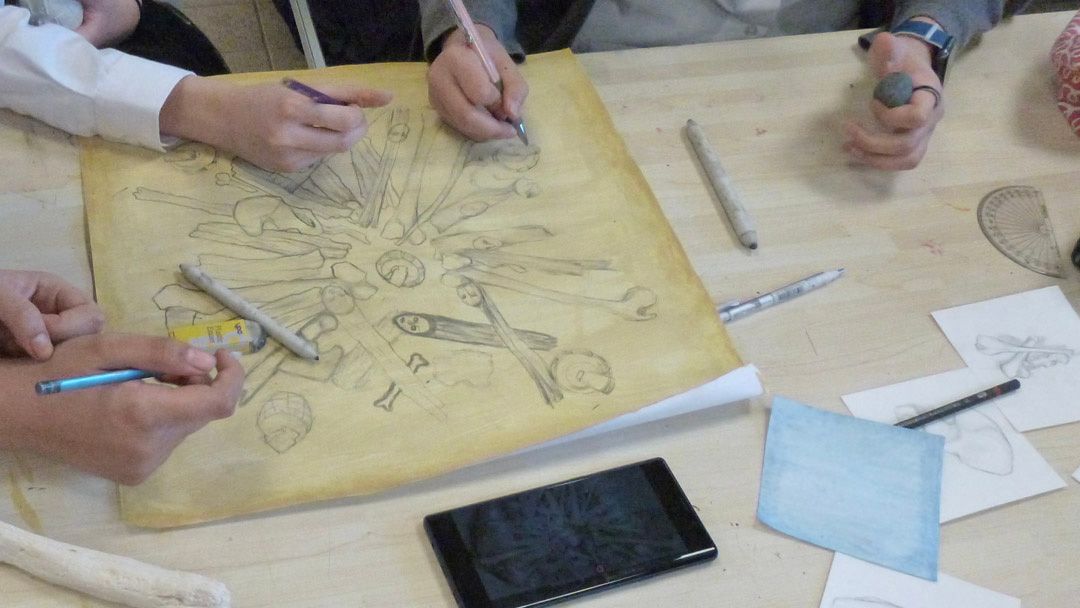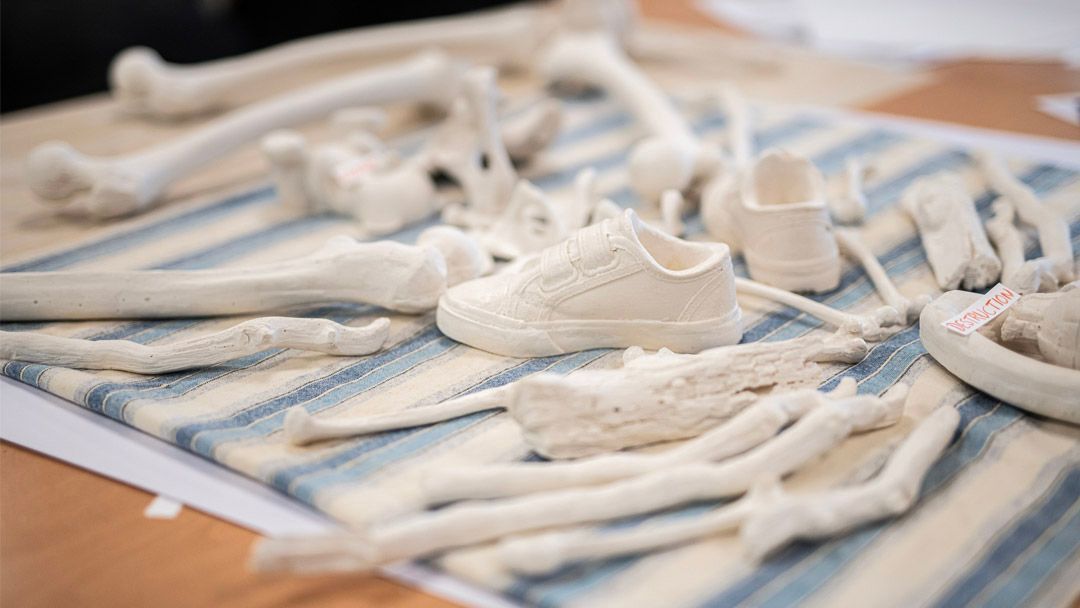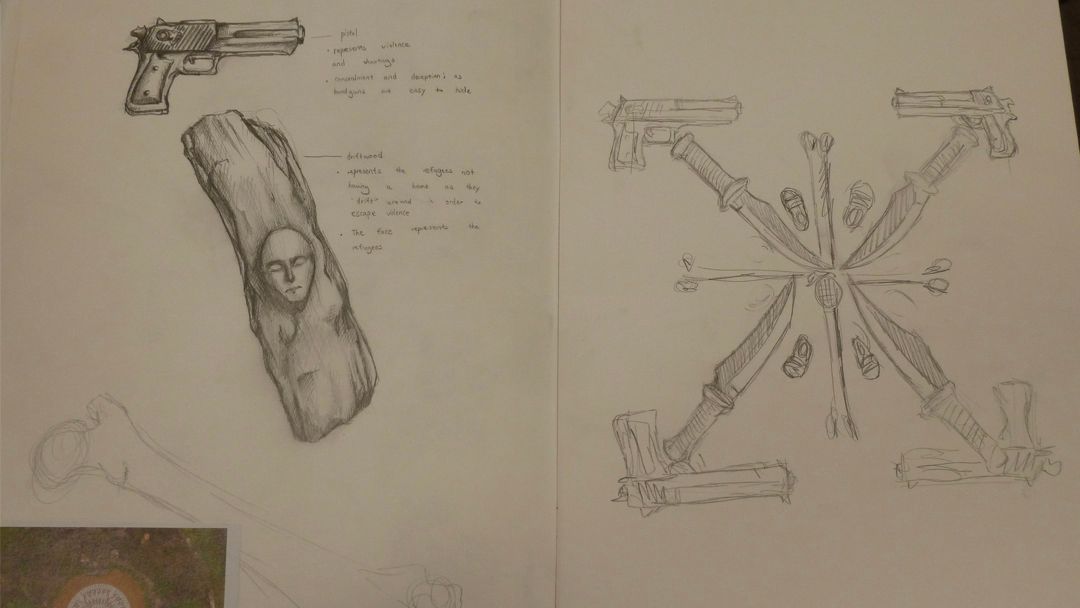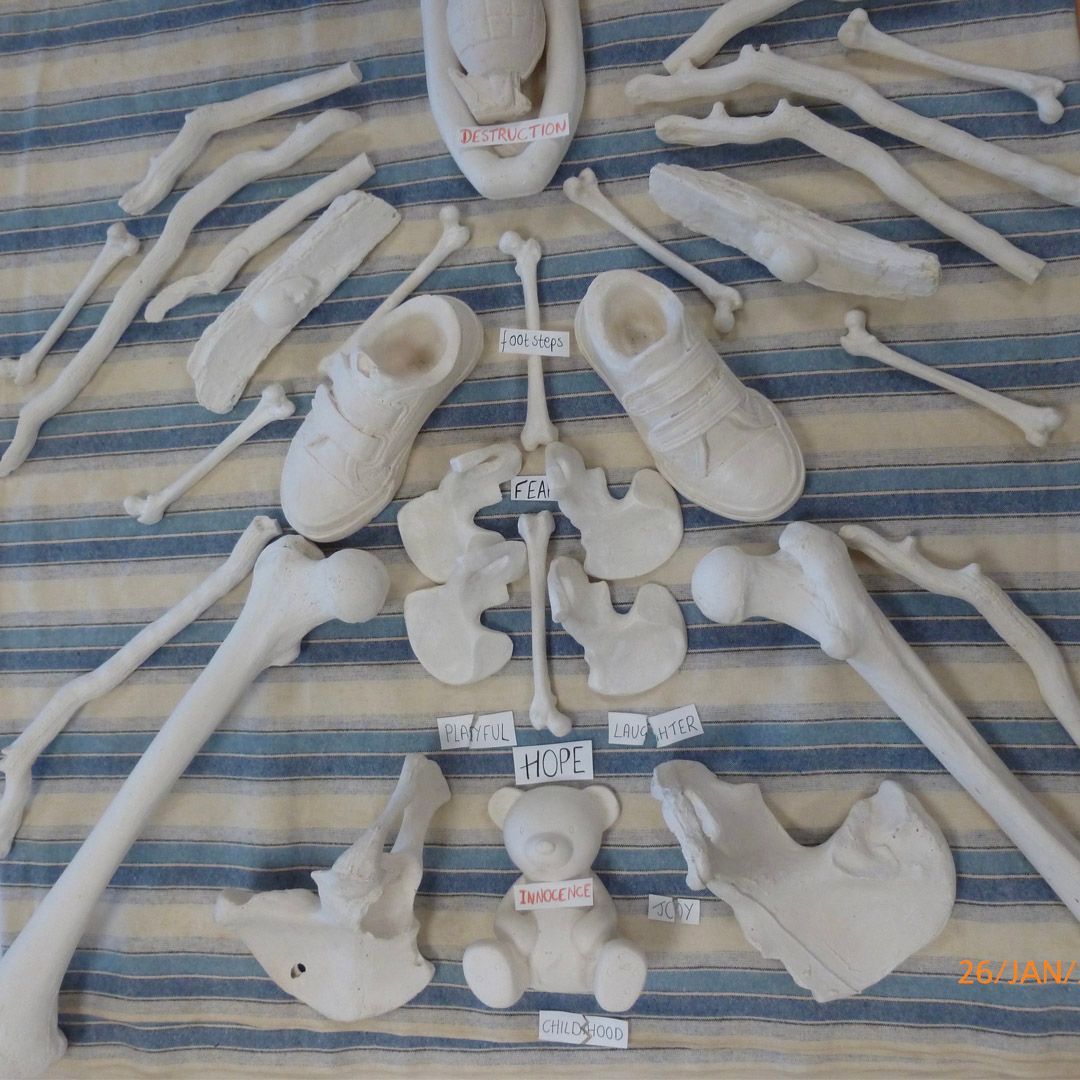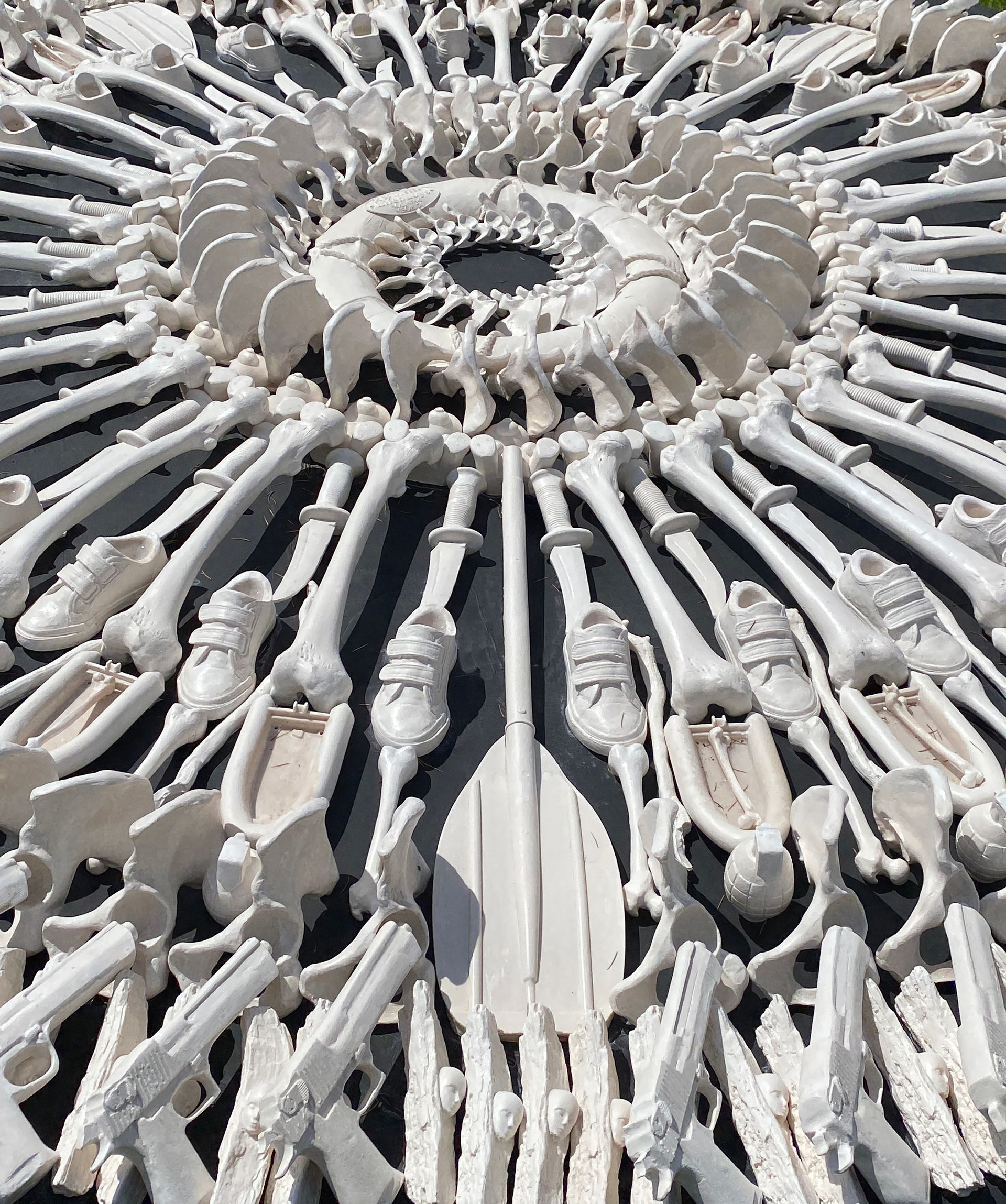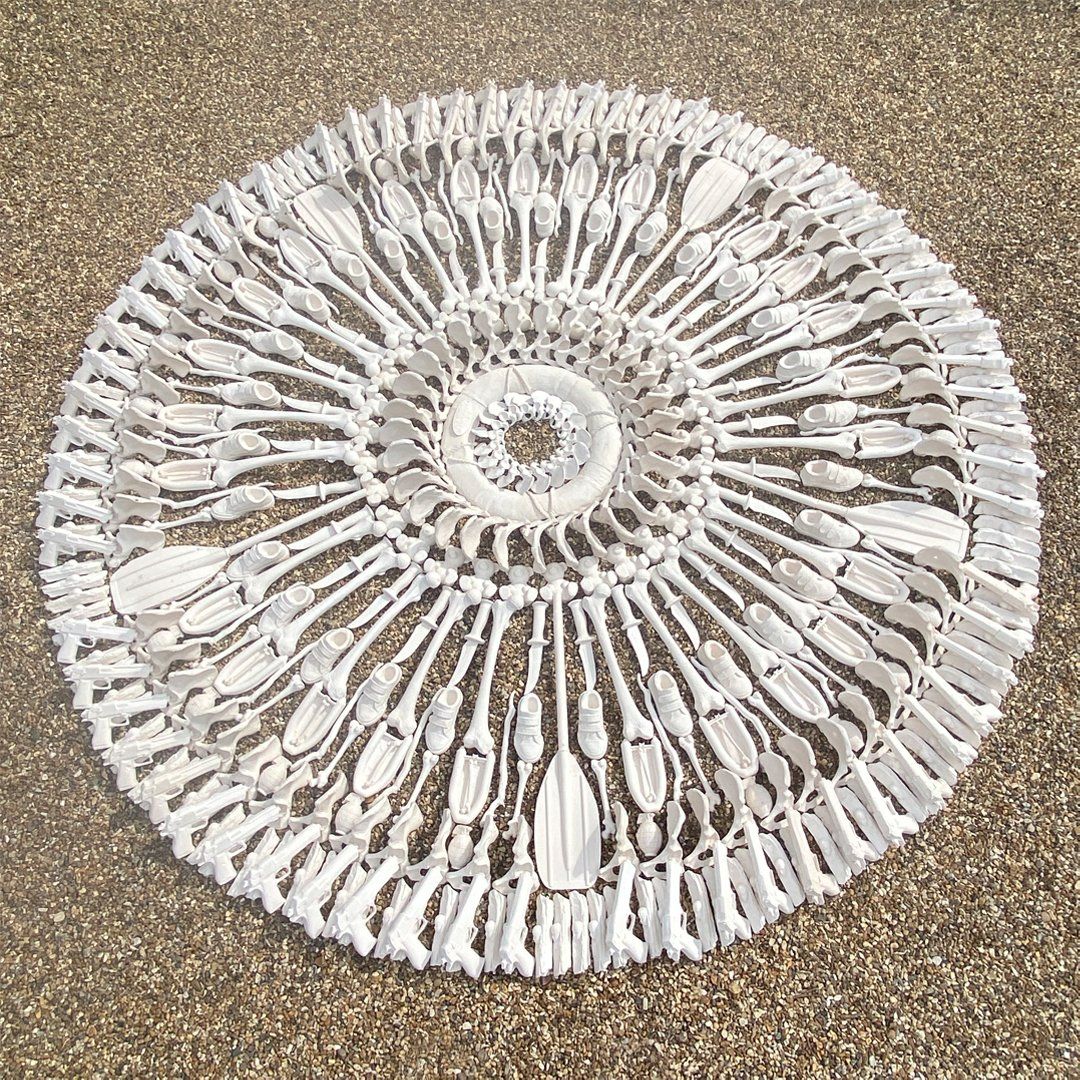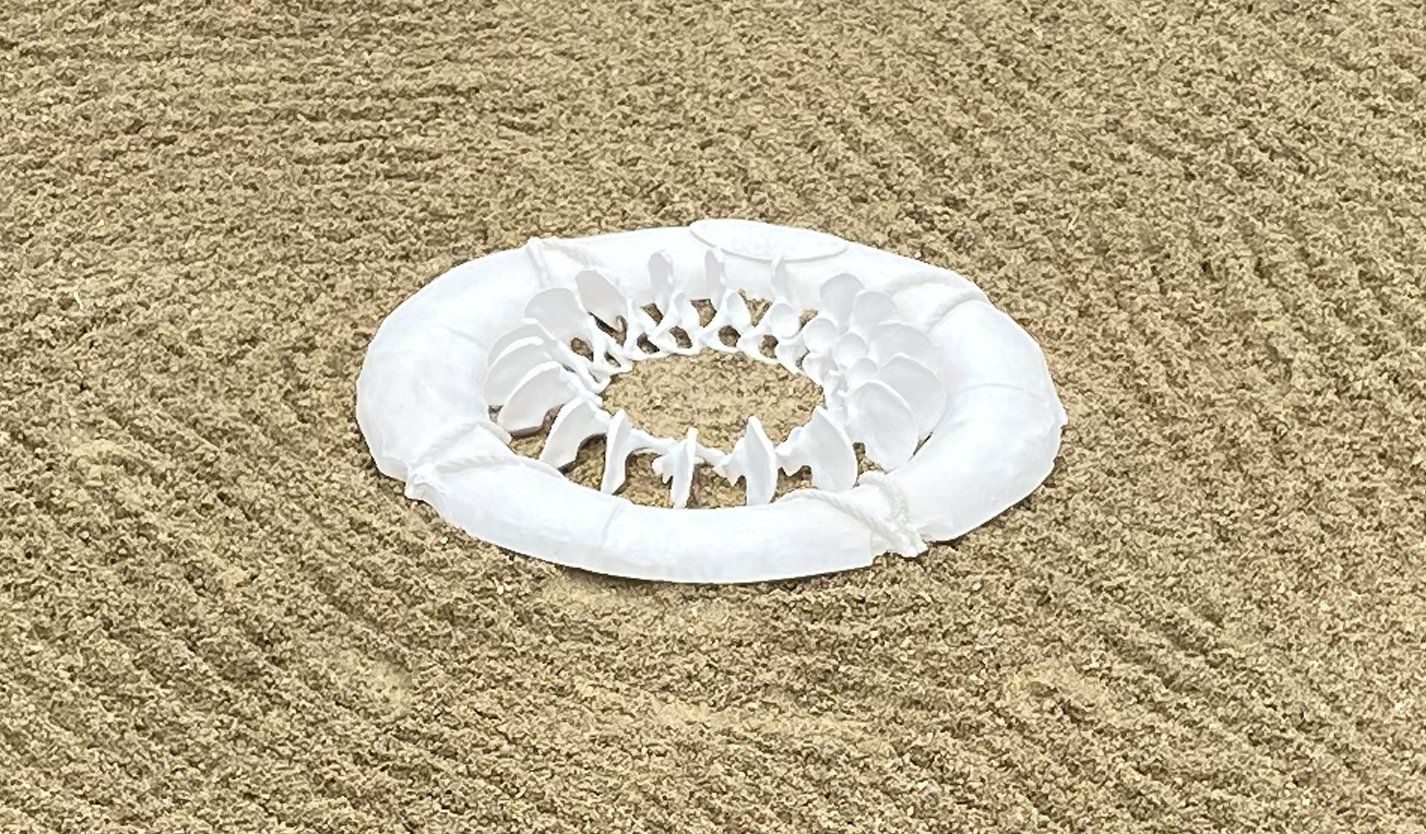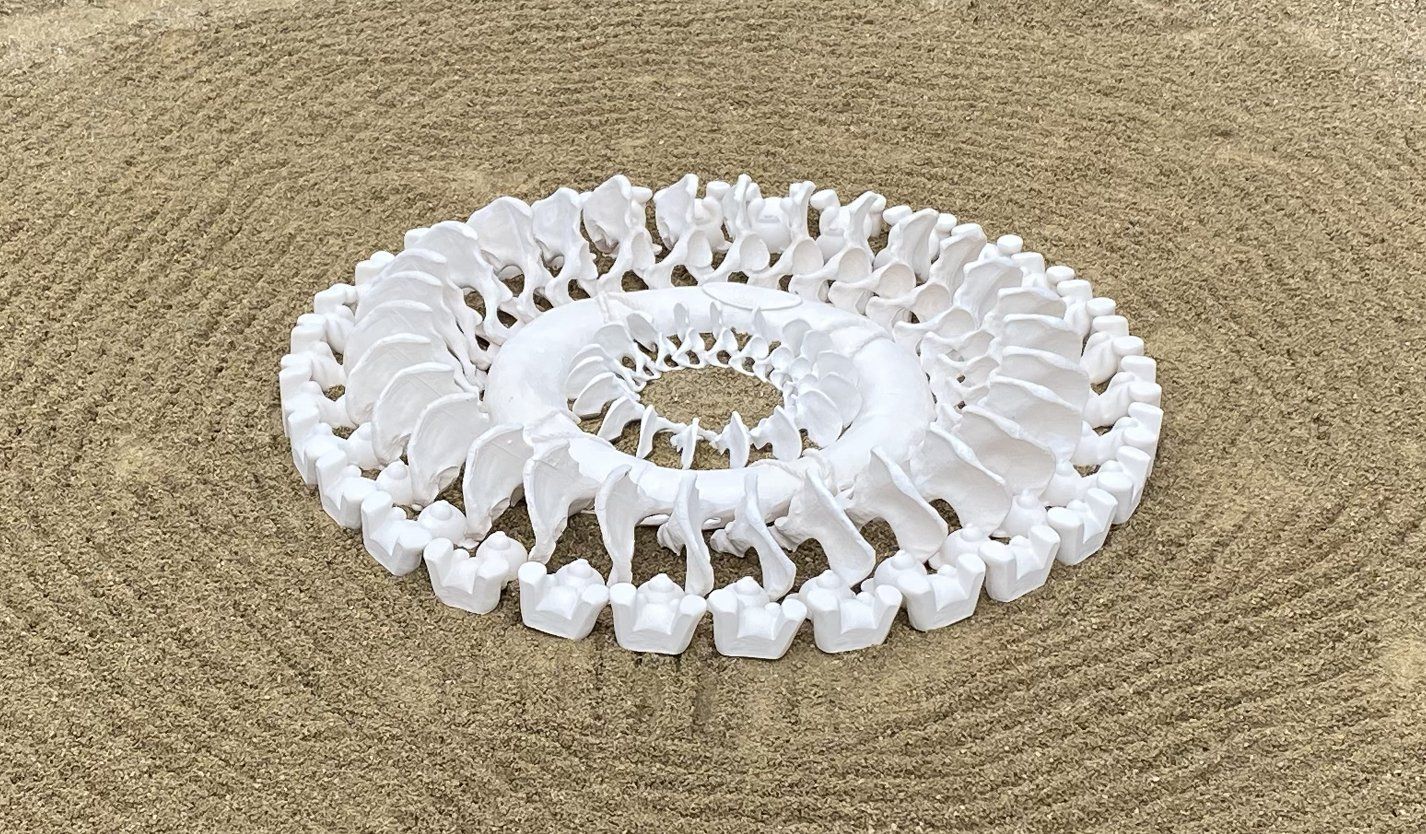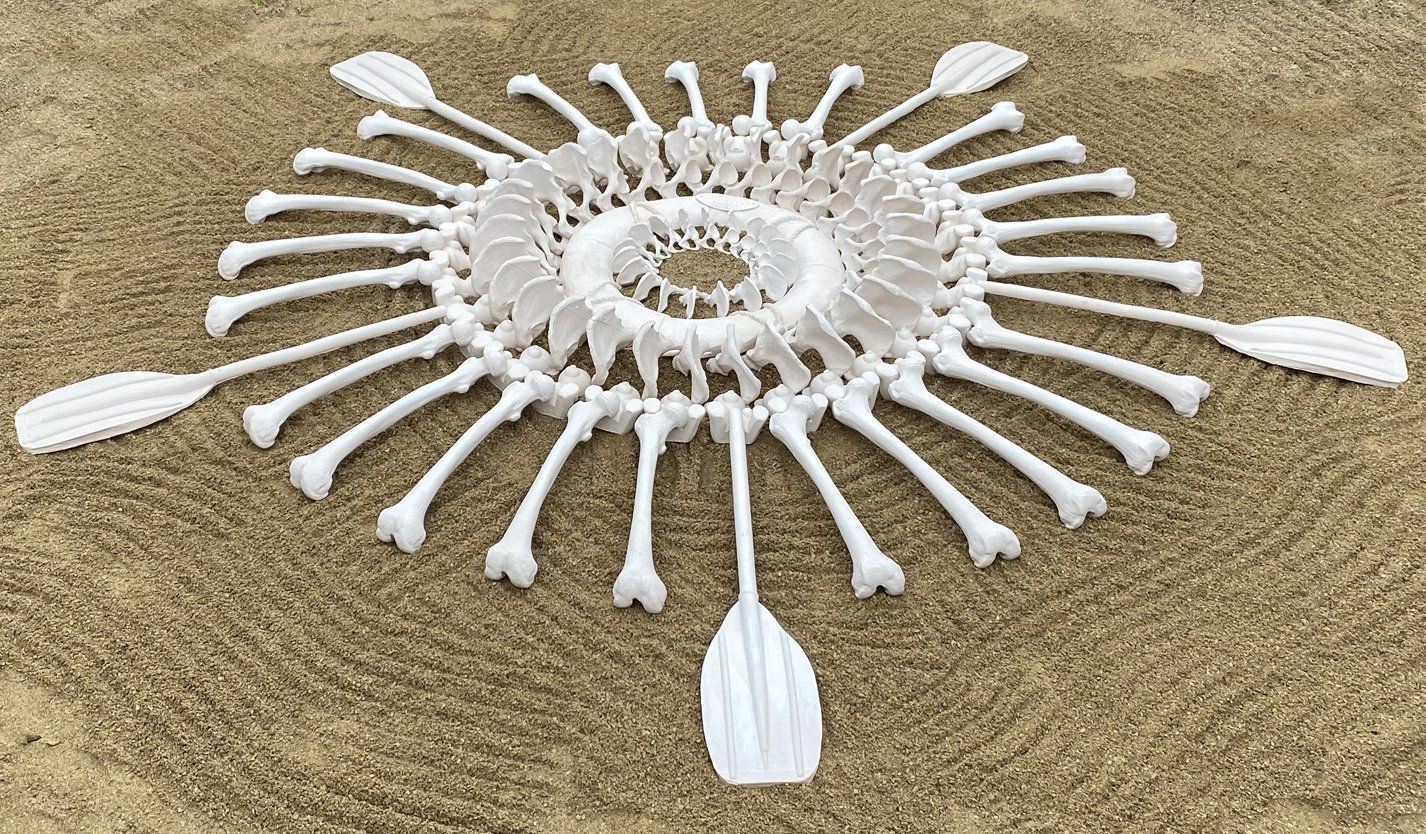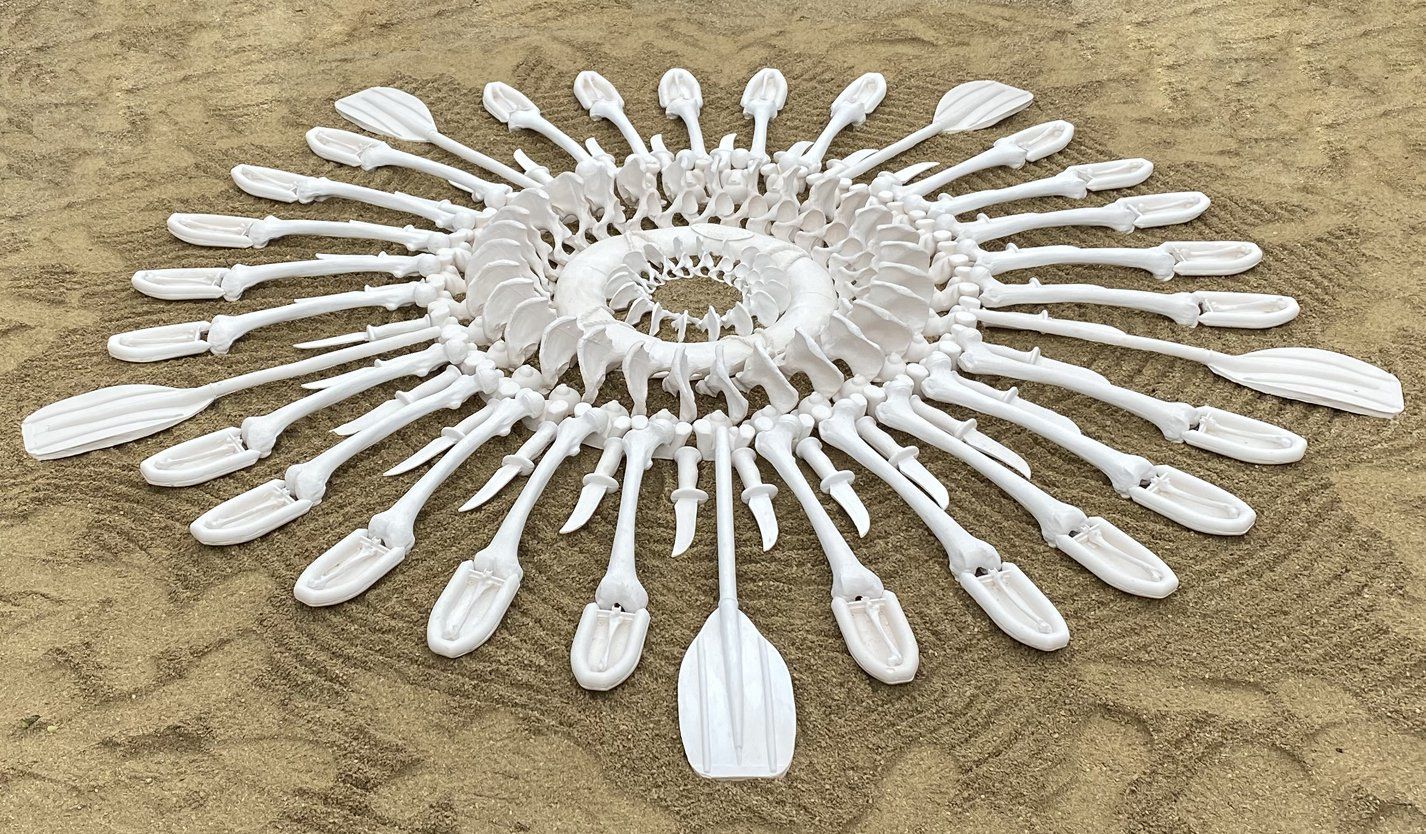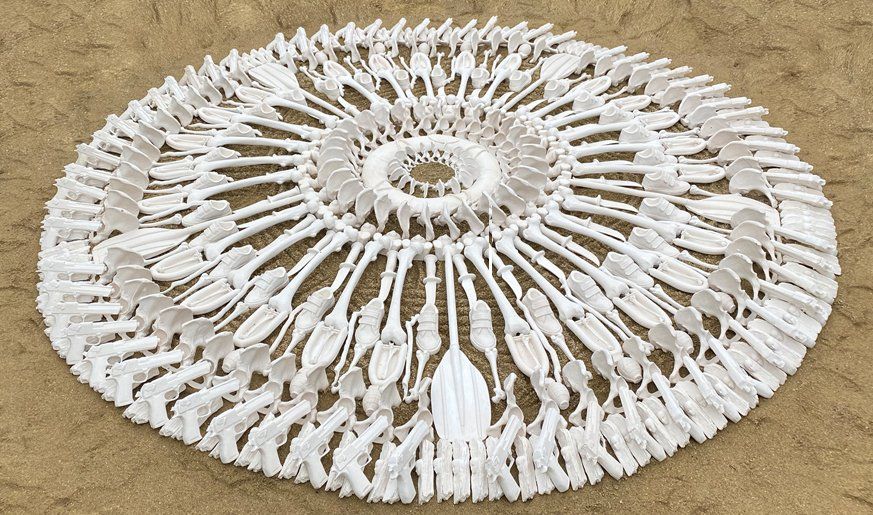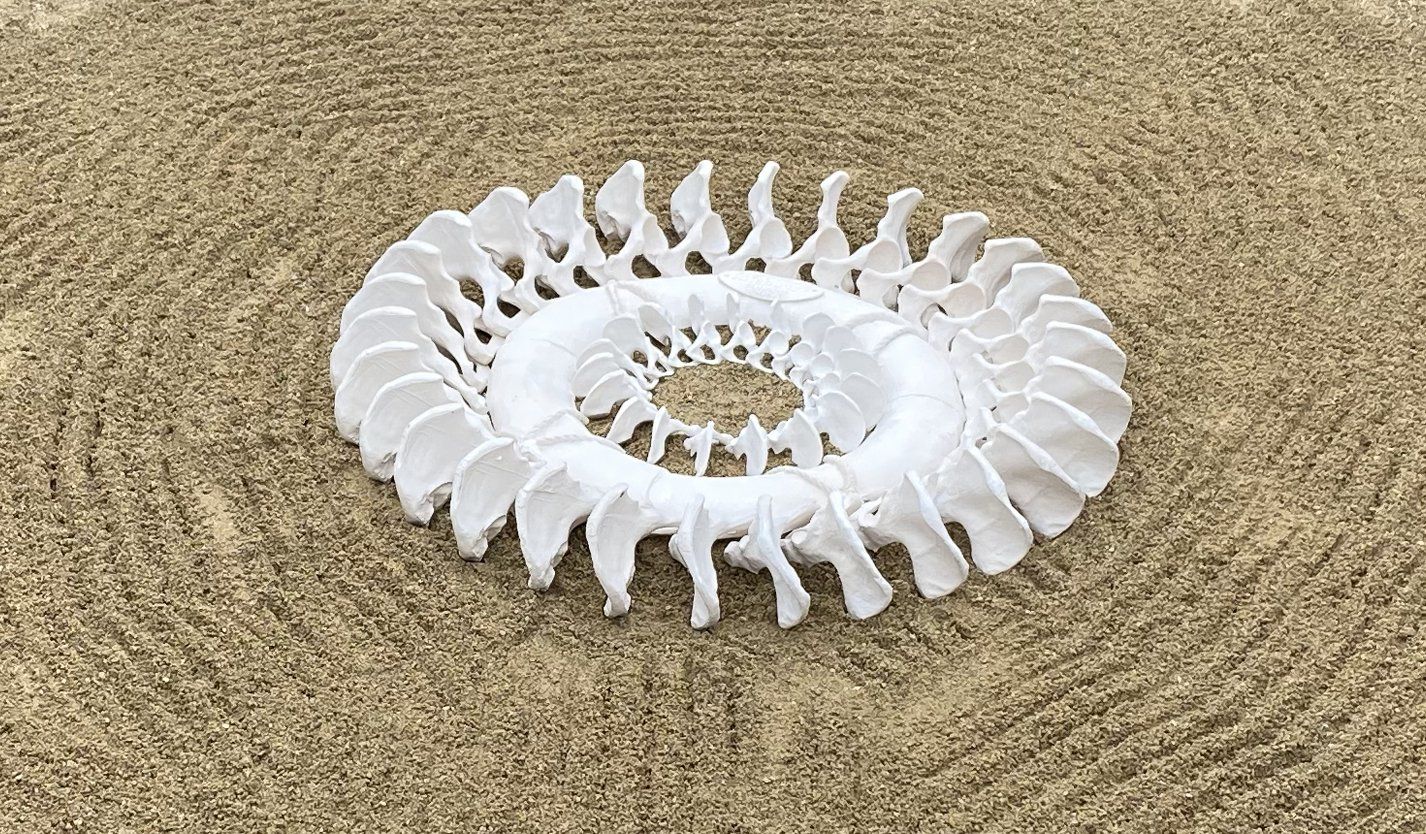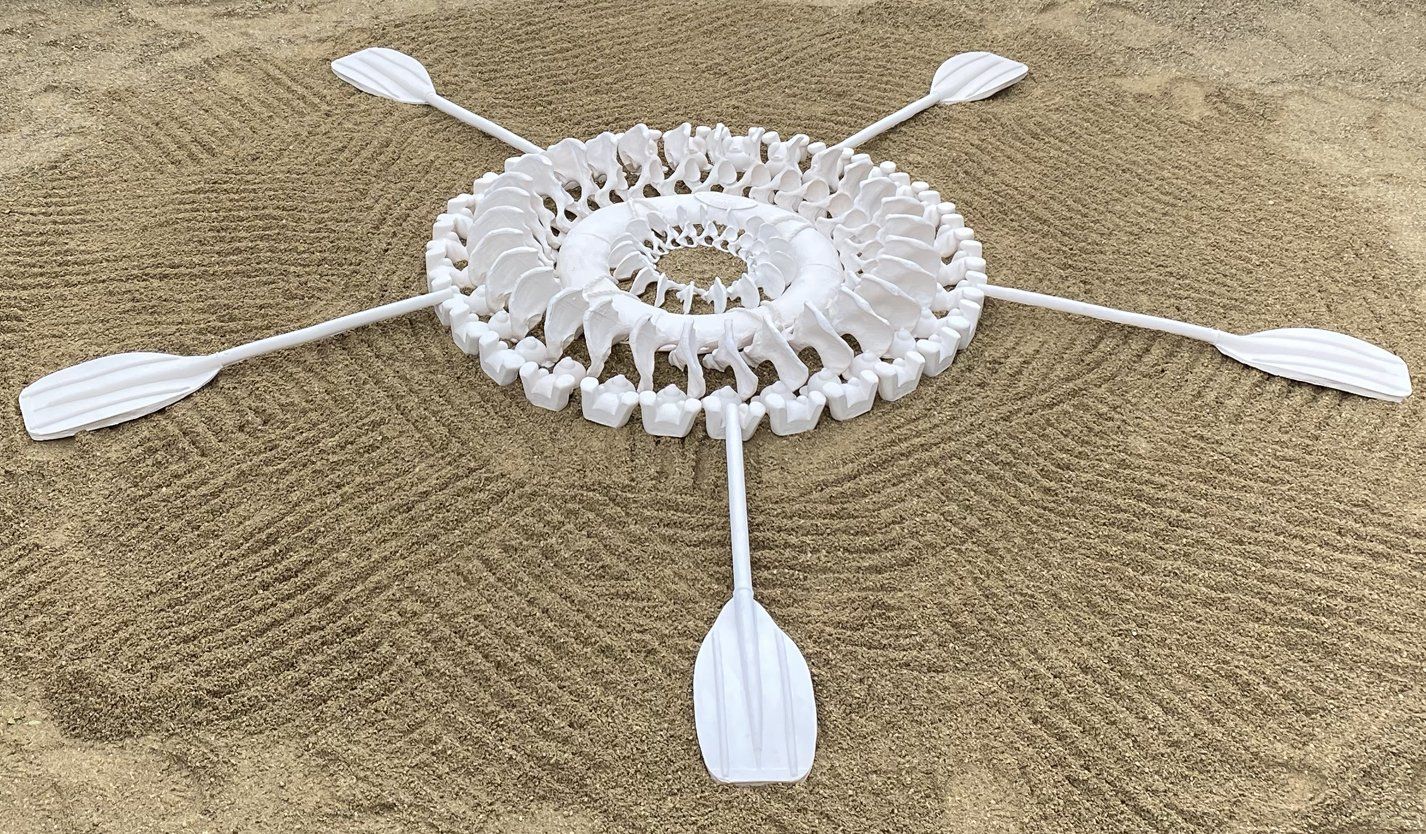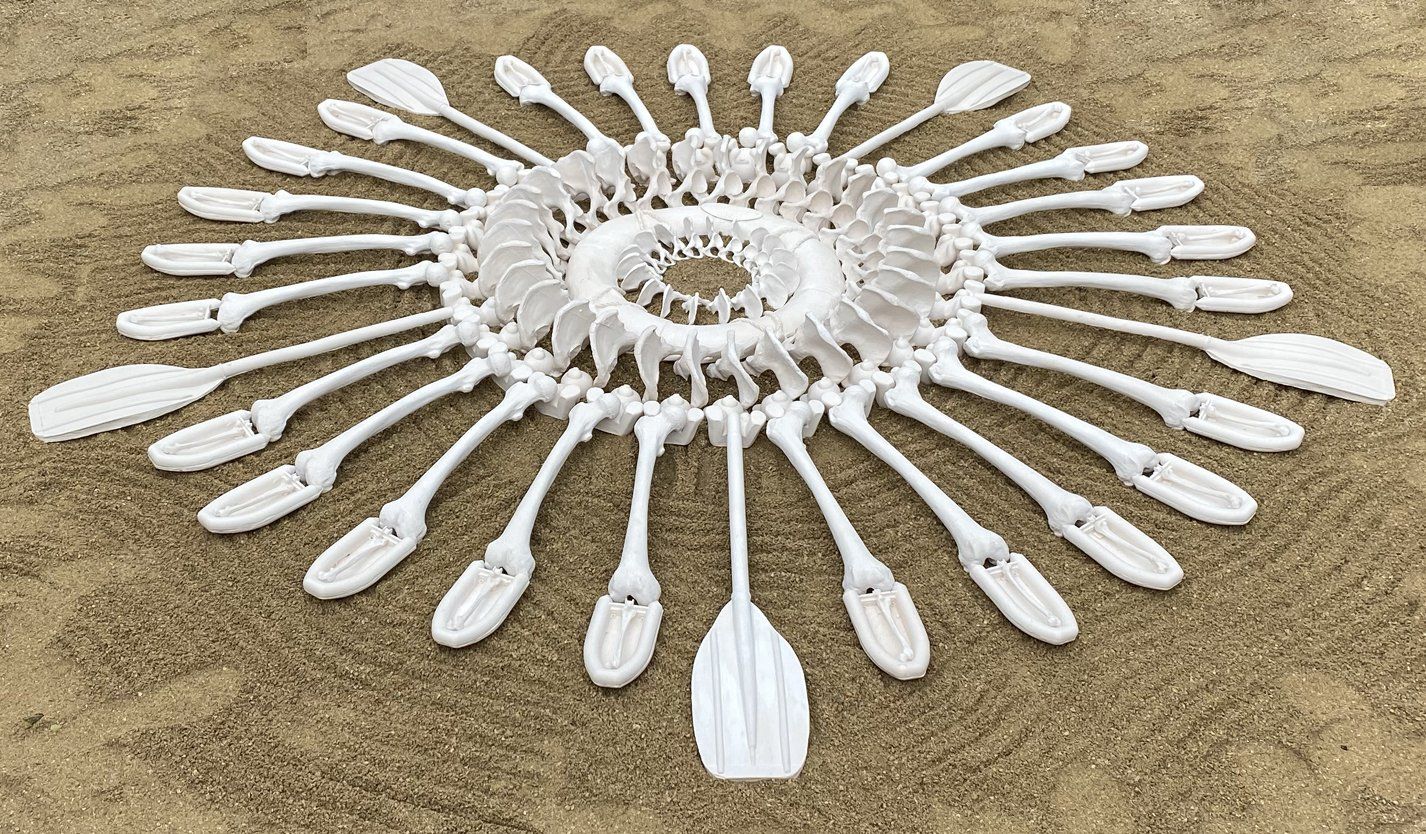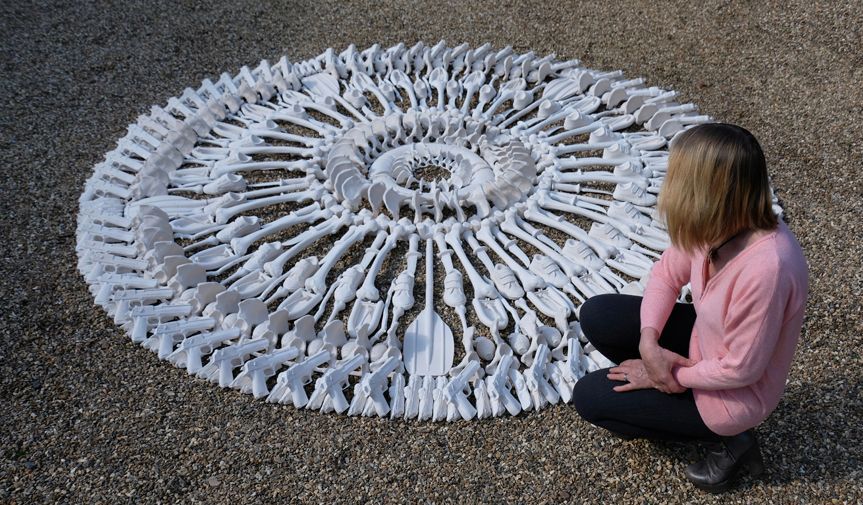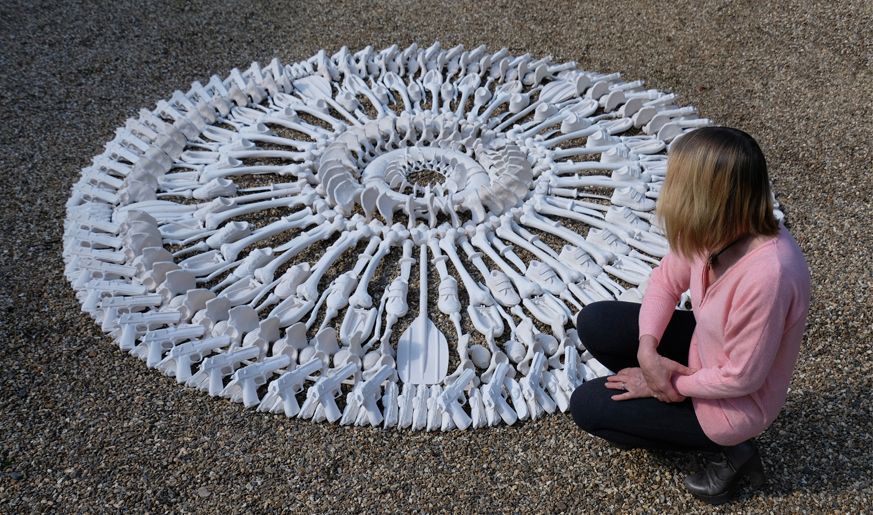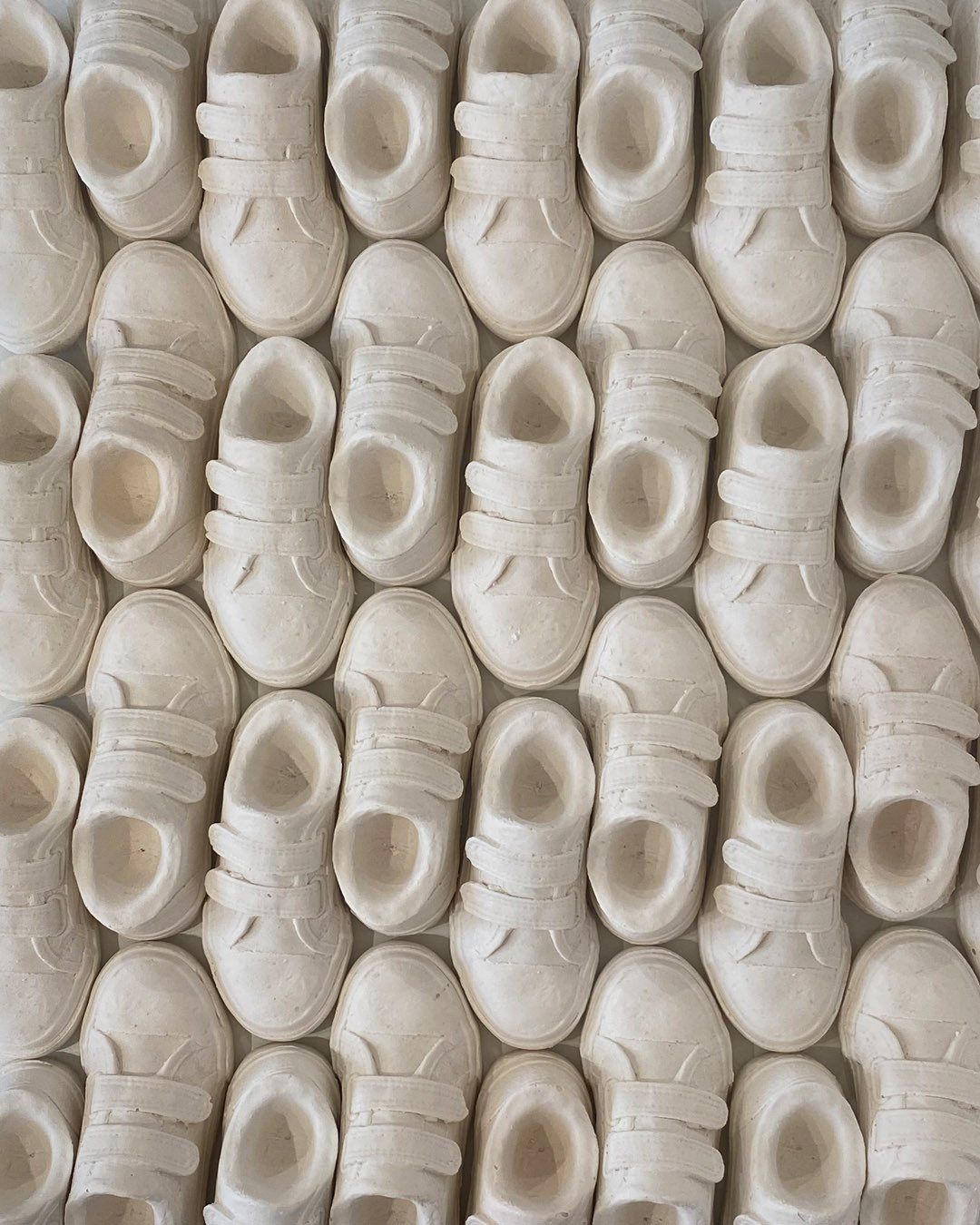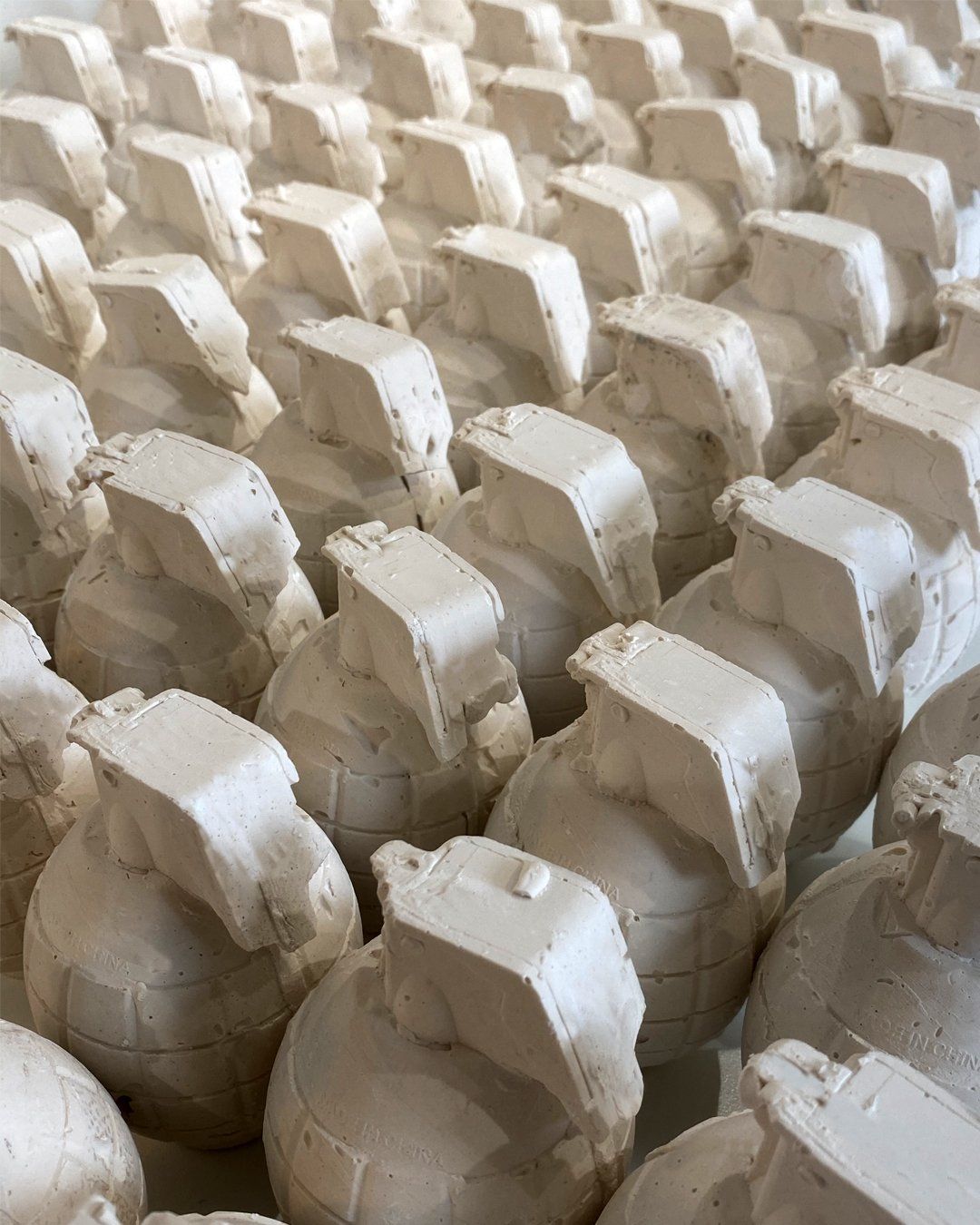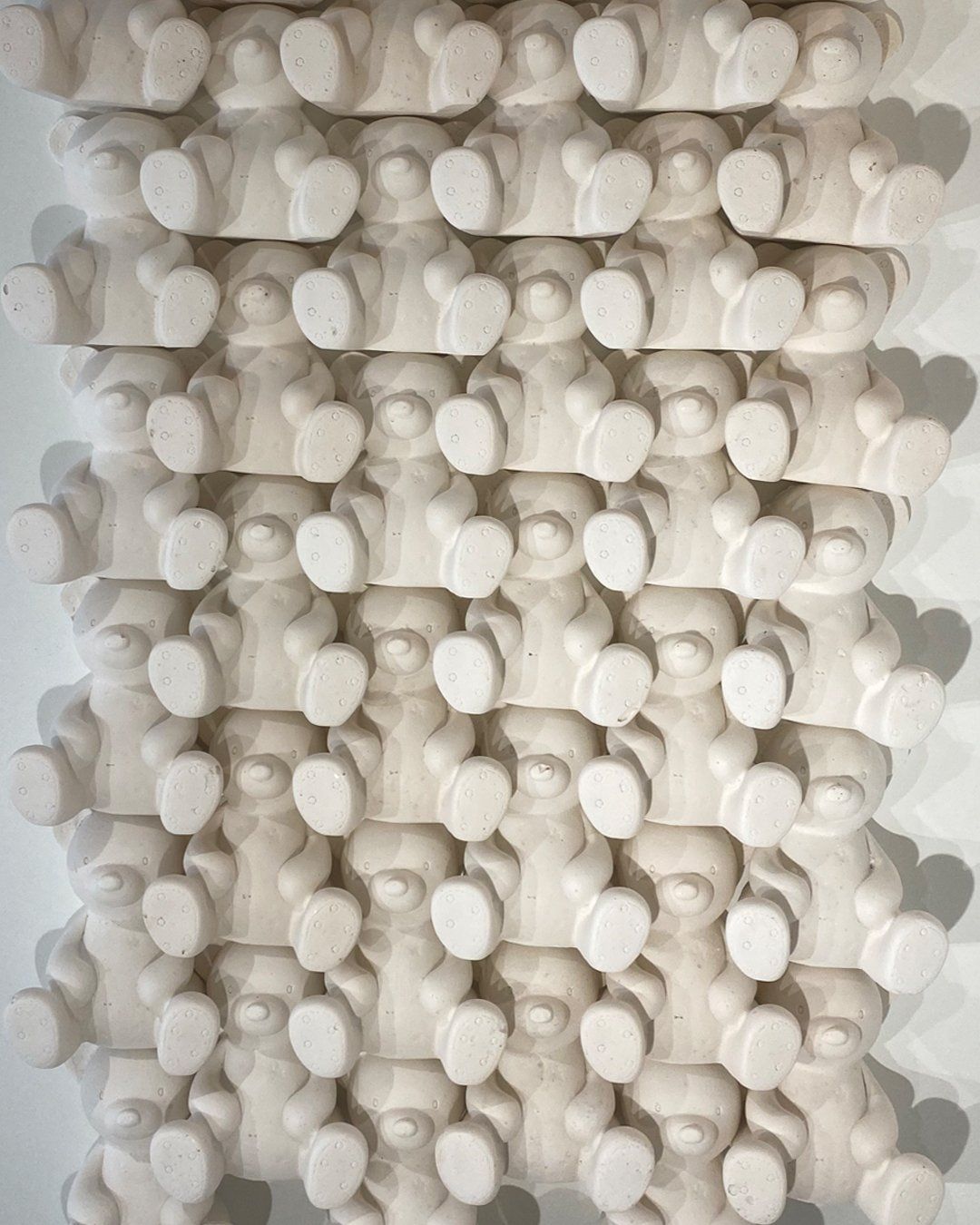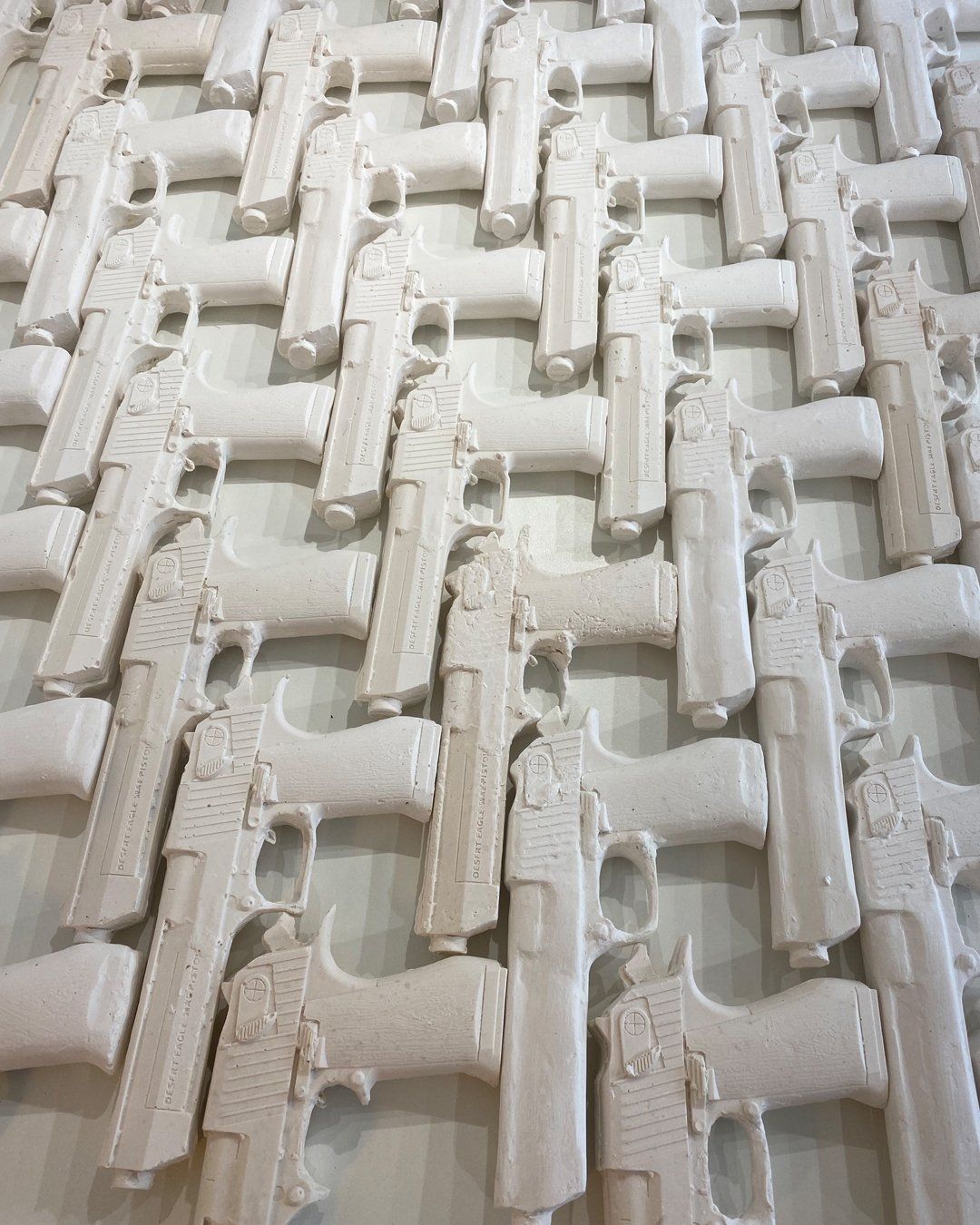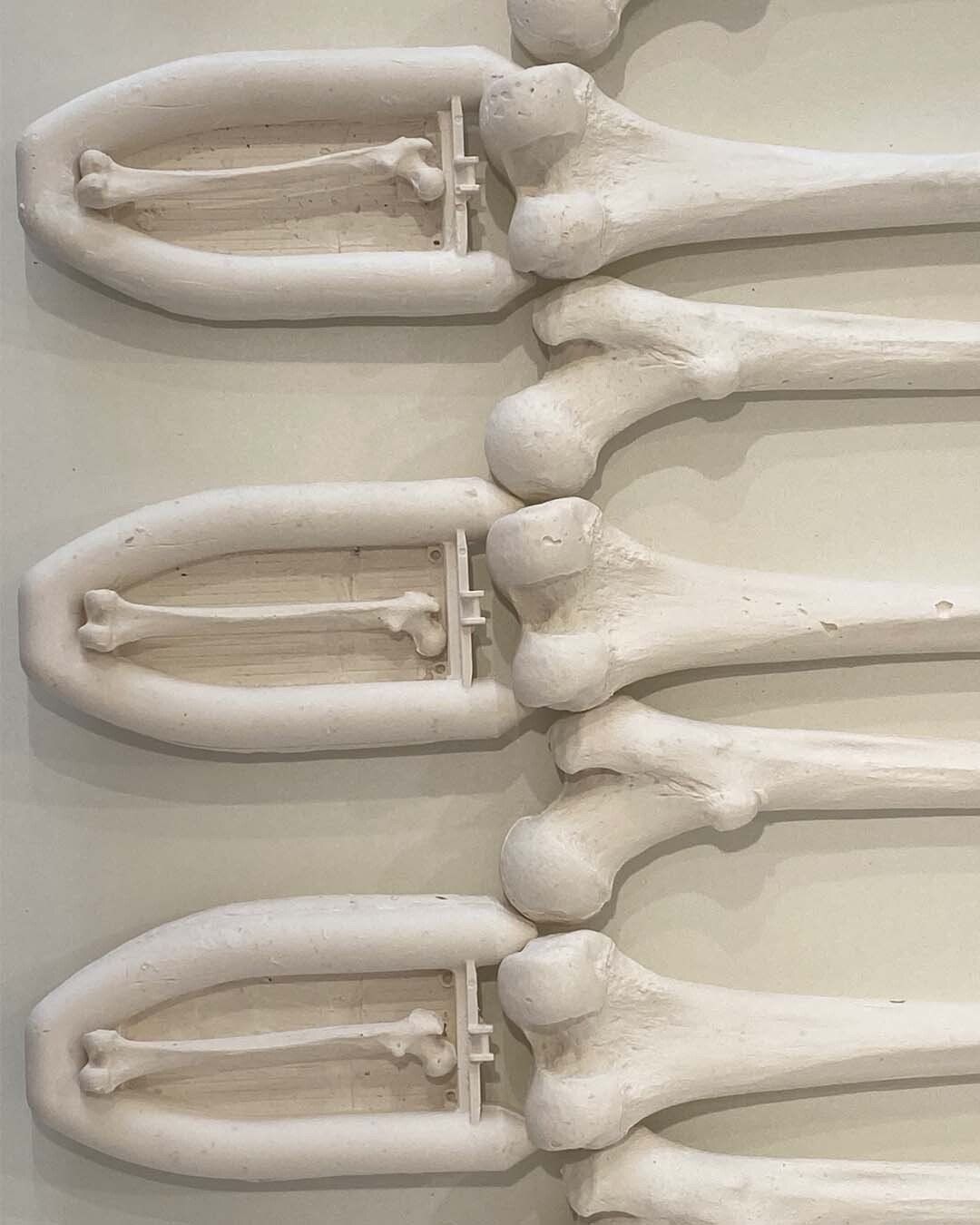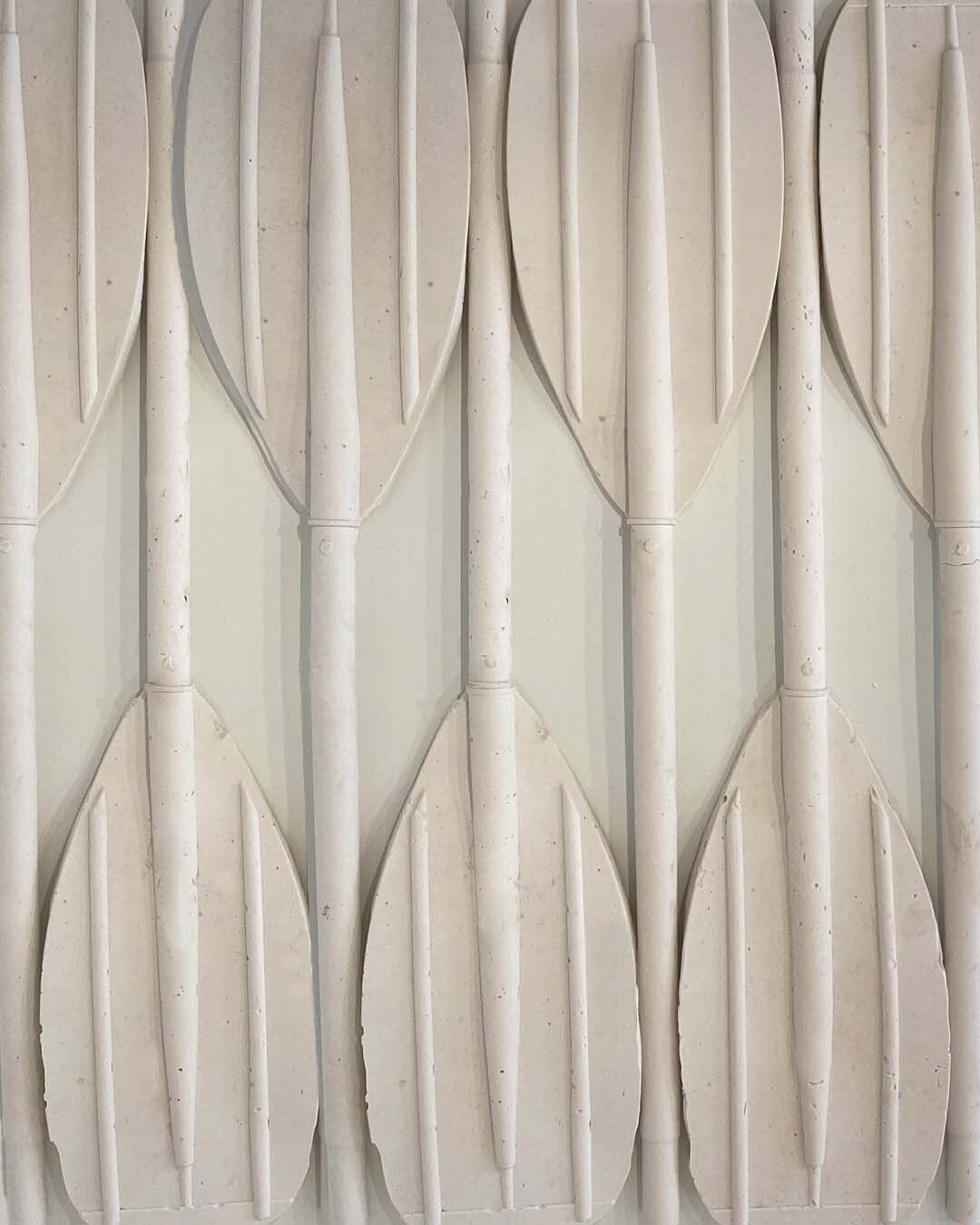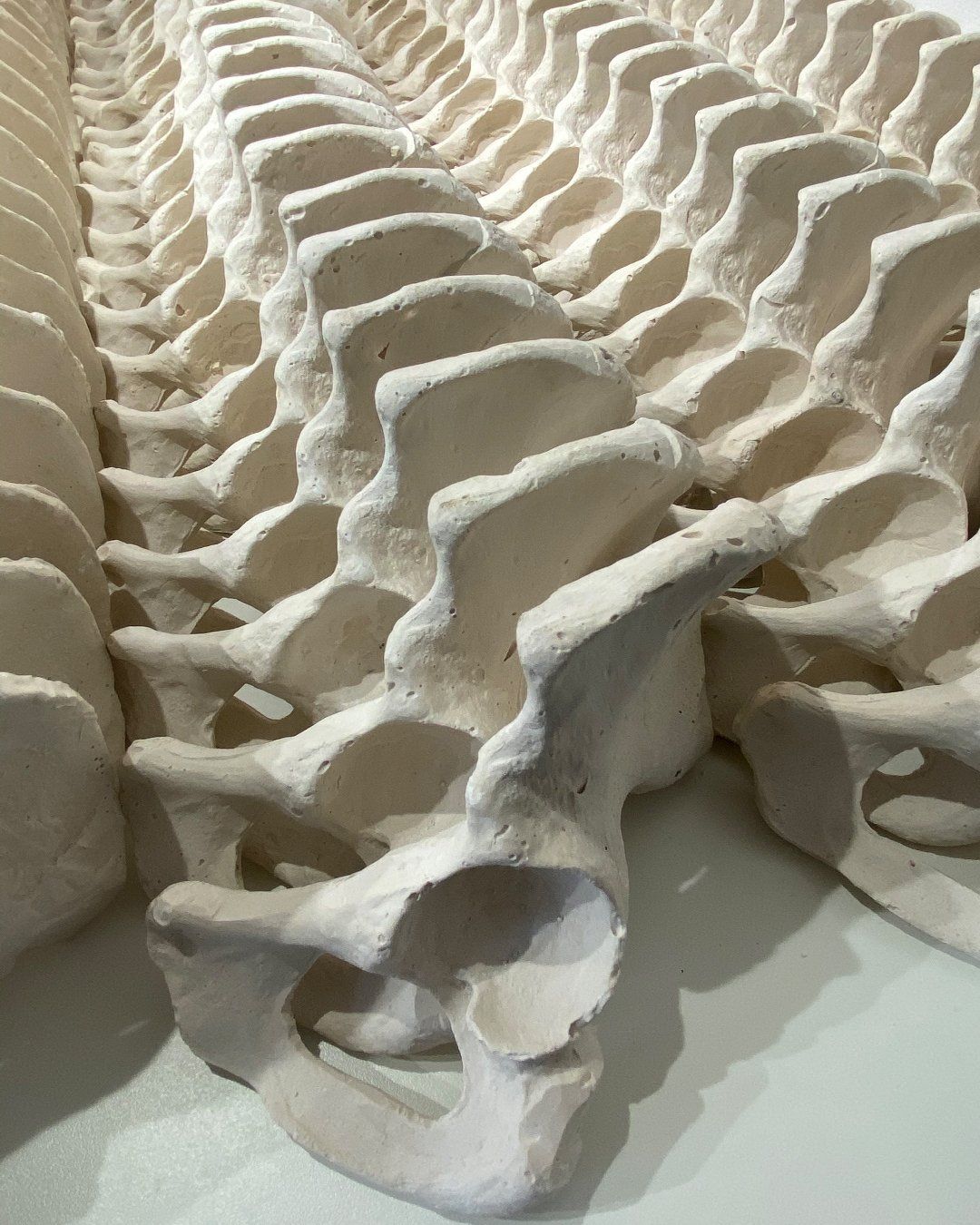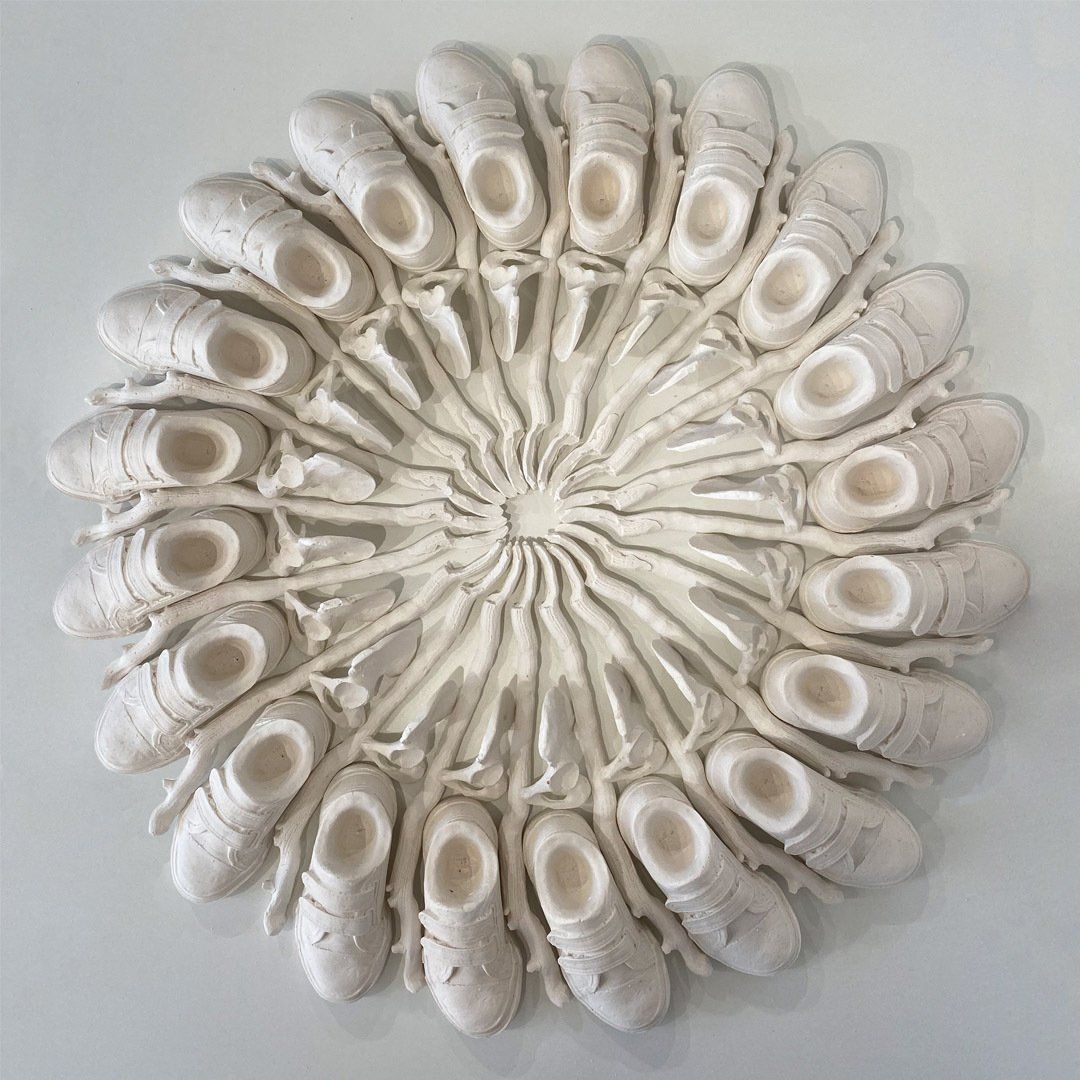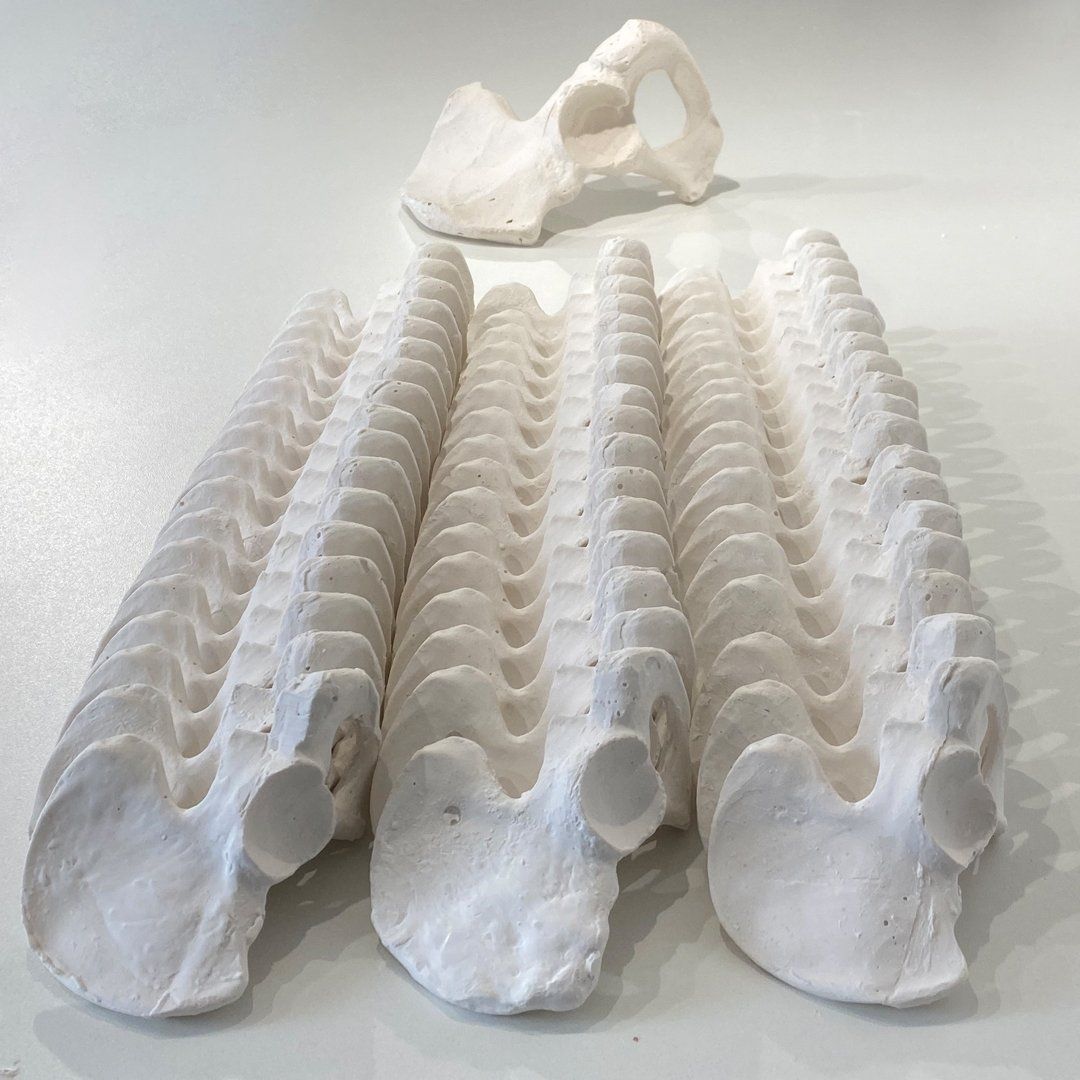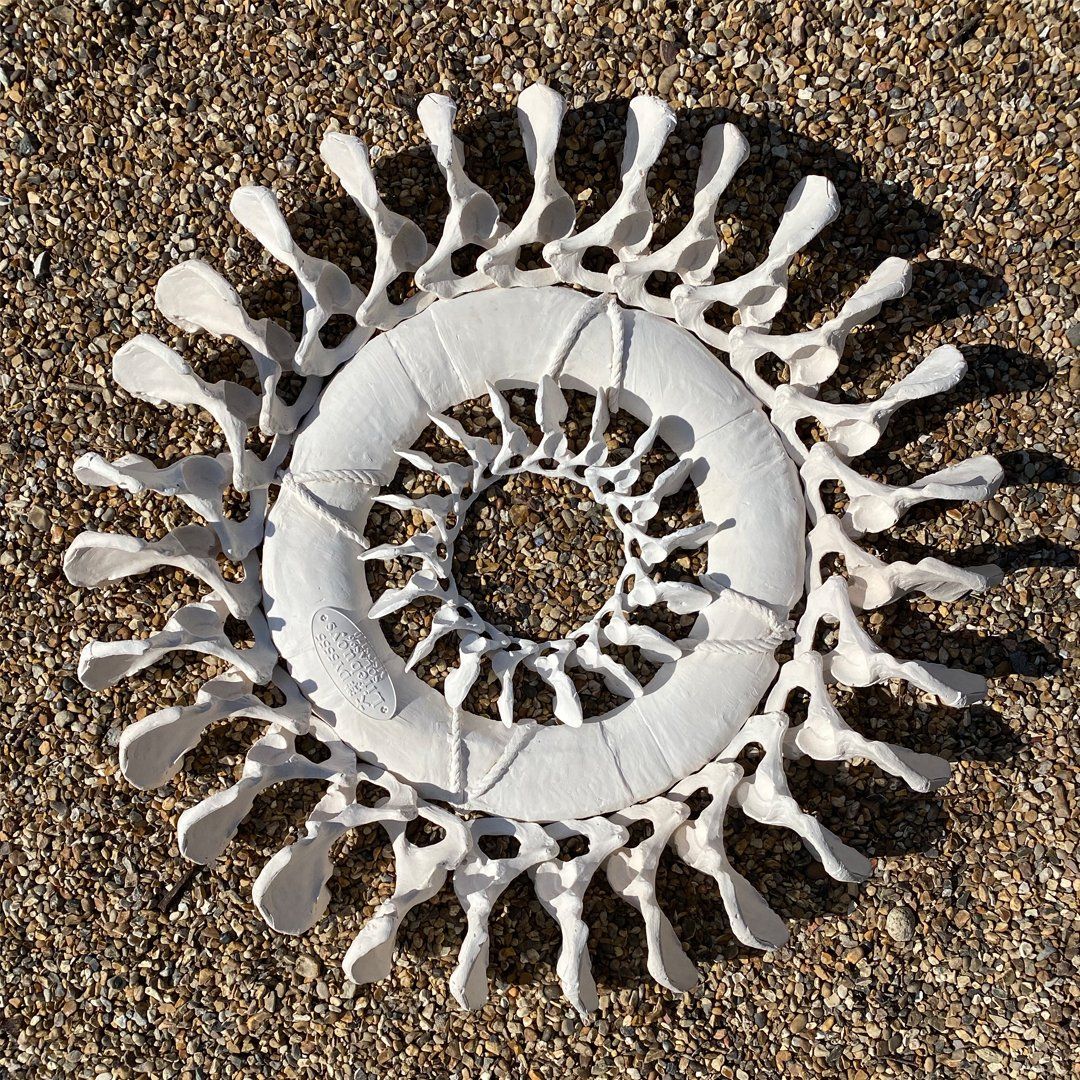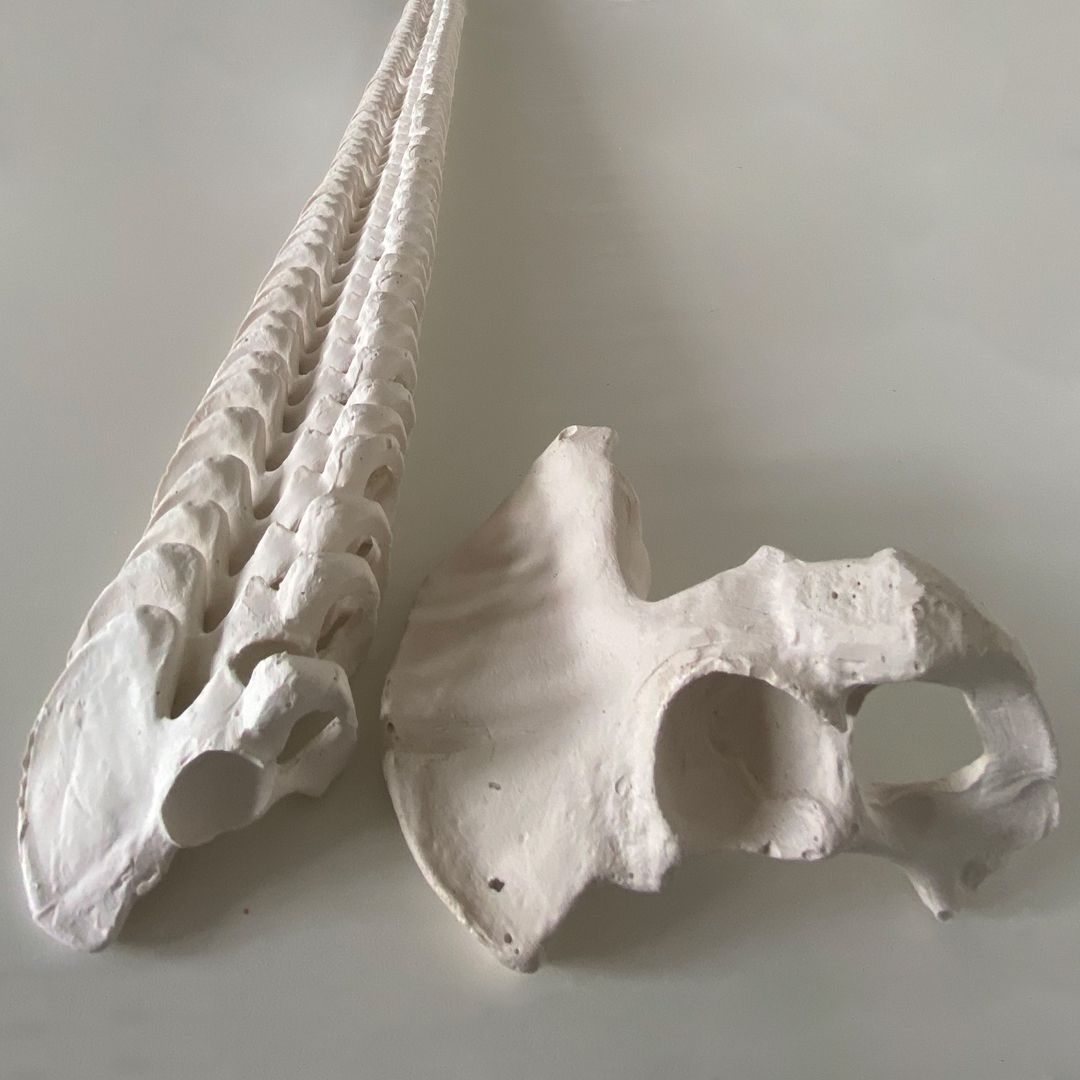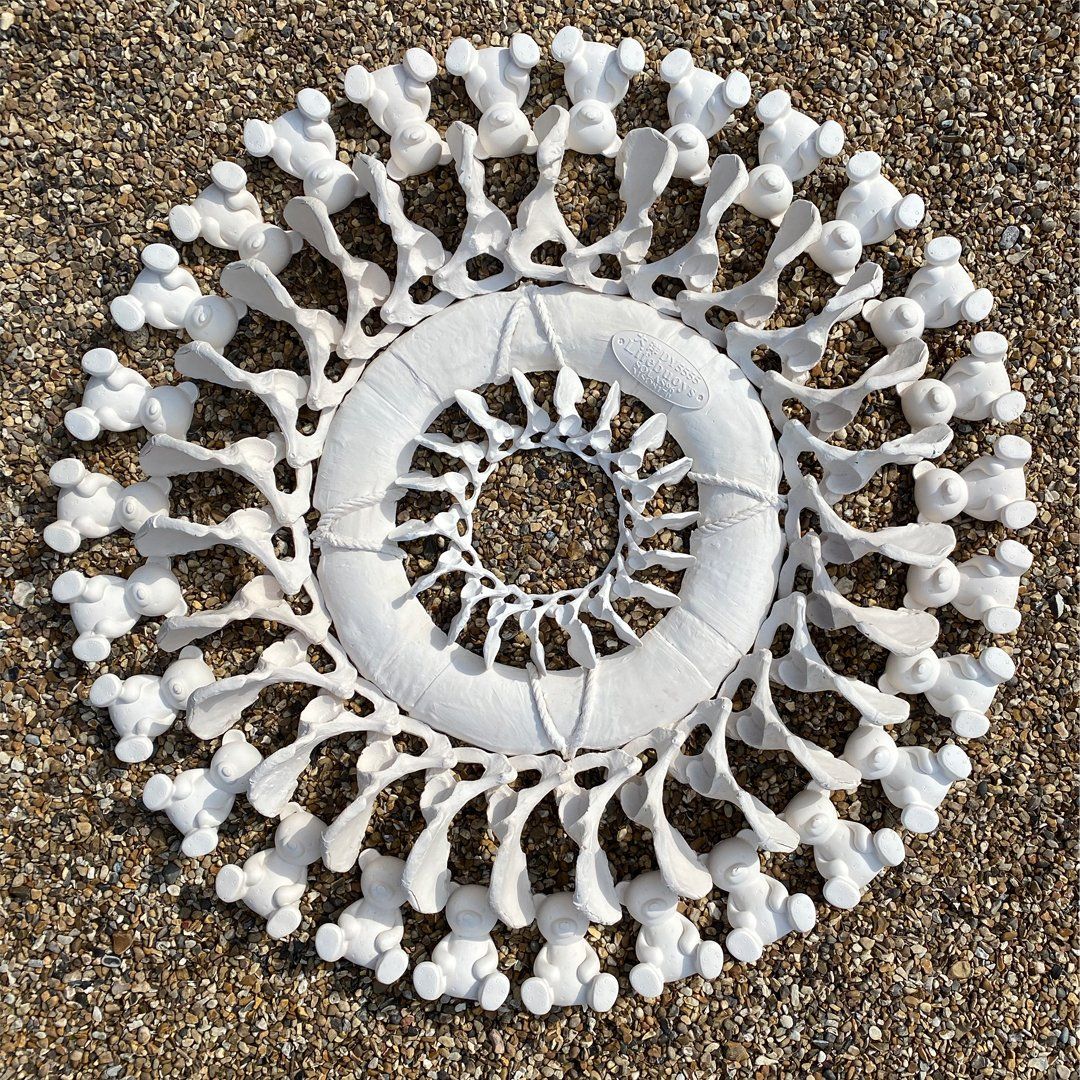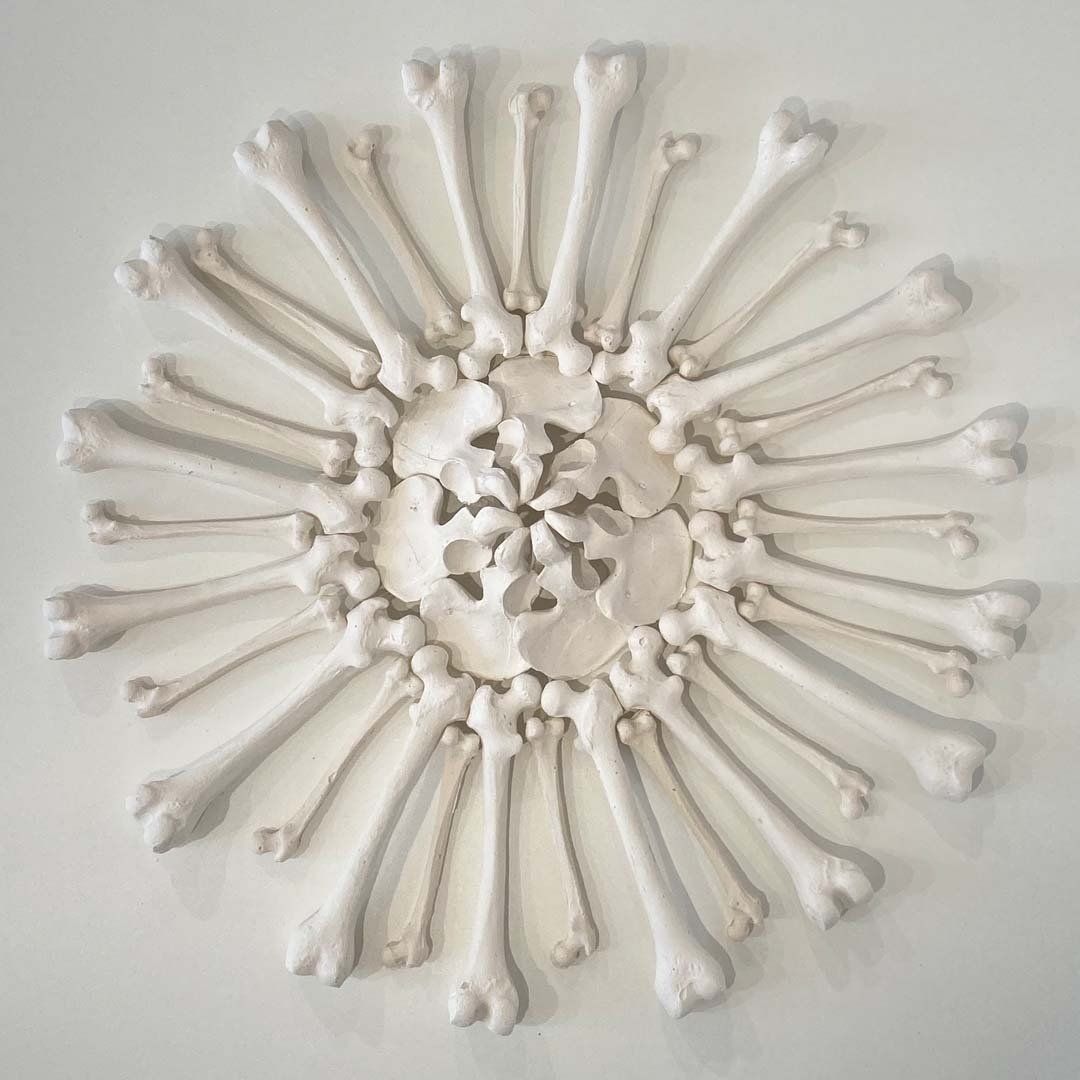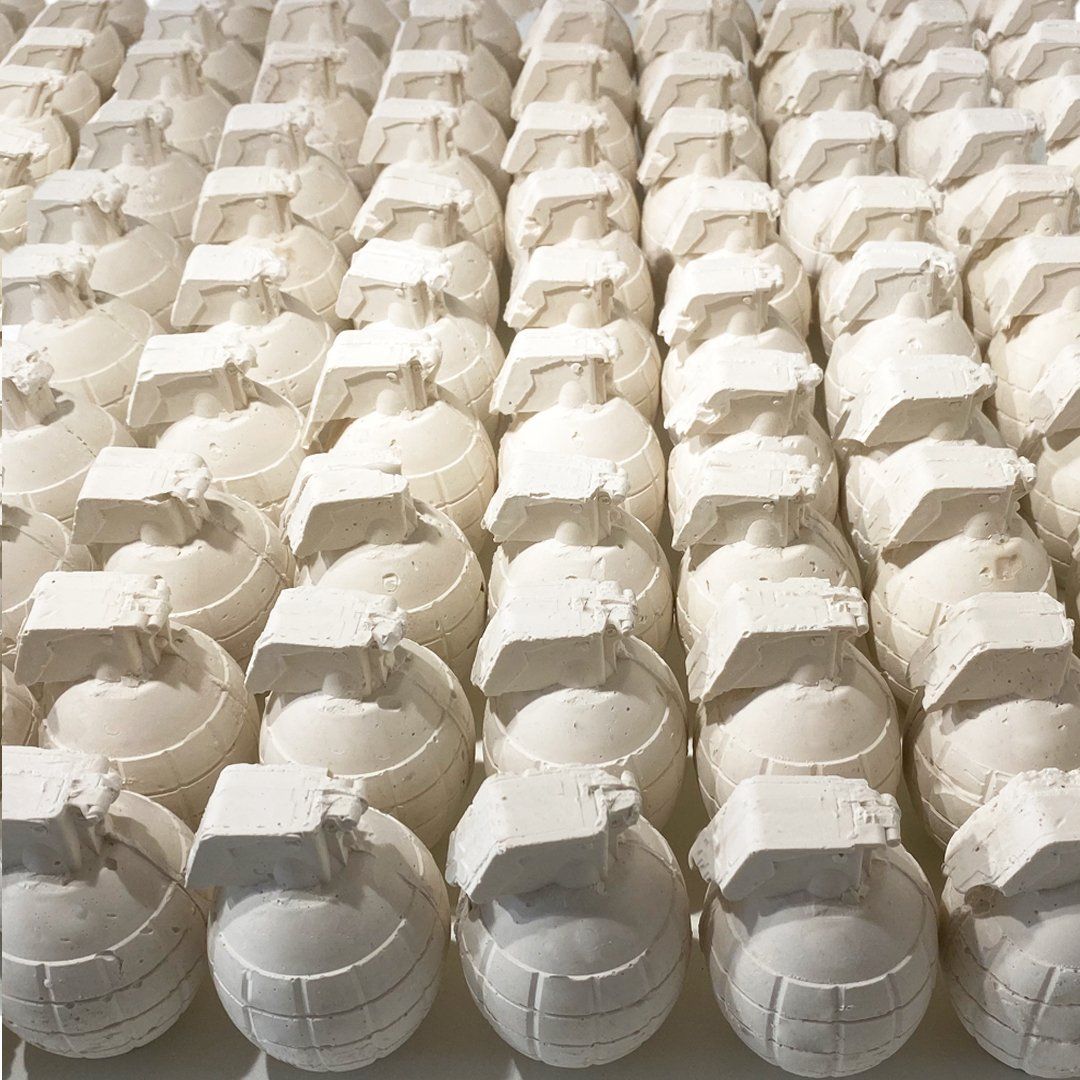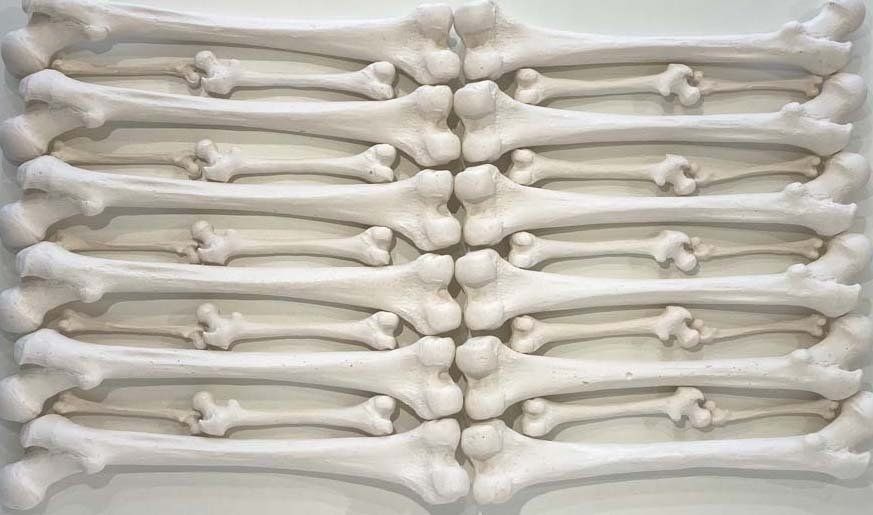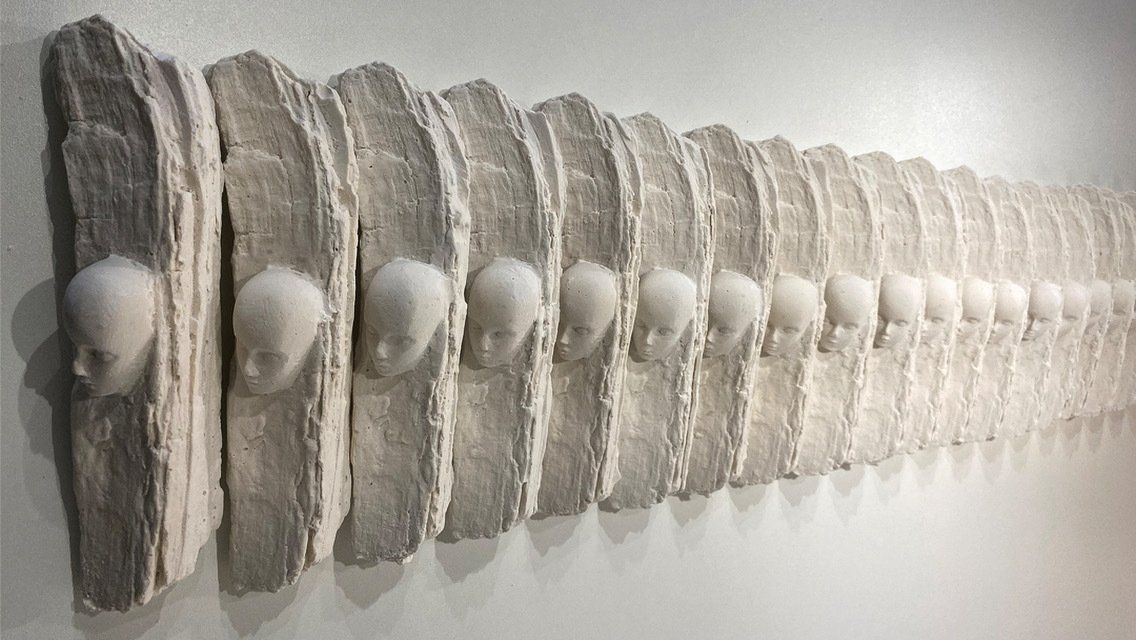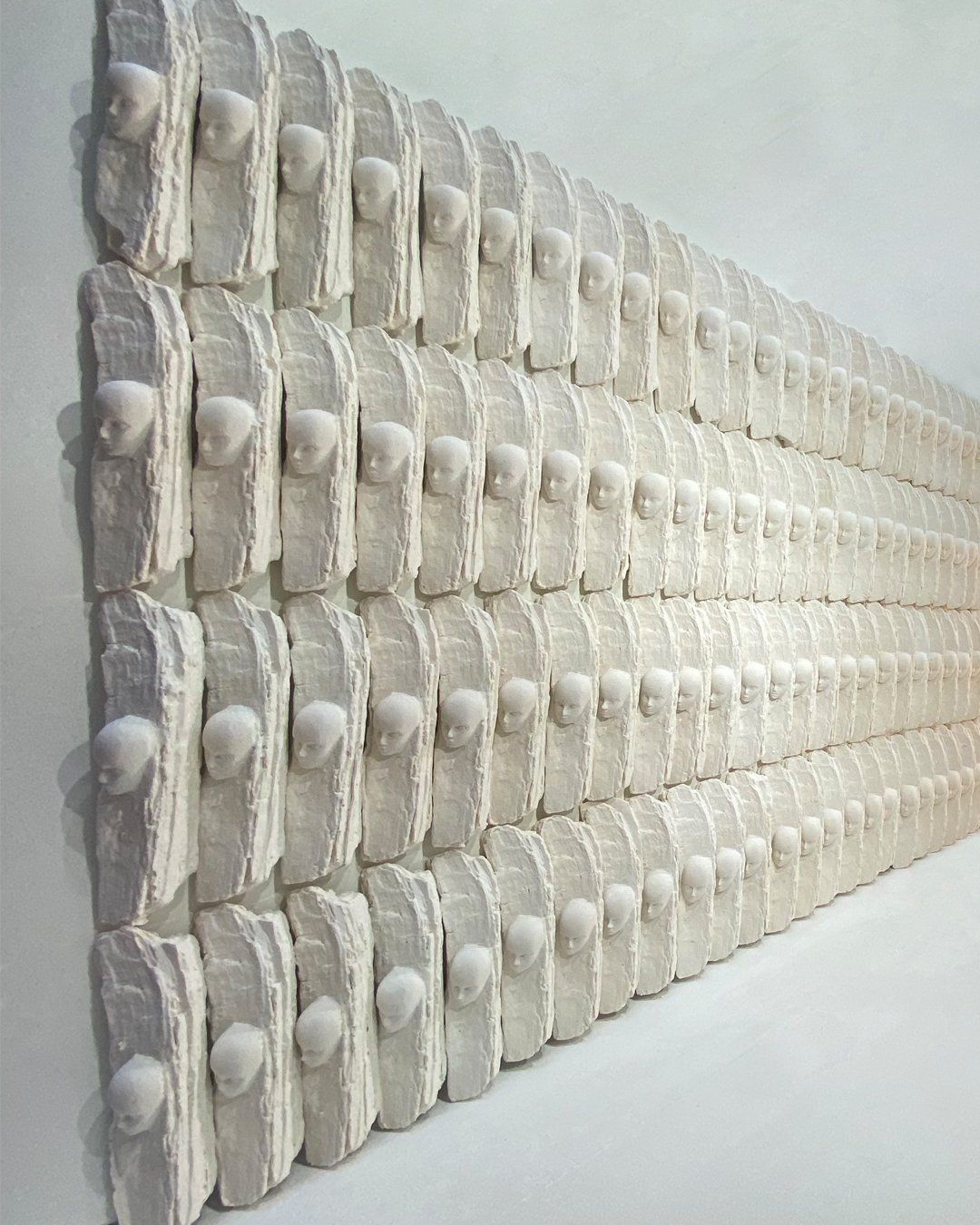THE COLOUR OF MOURNING
(Migrant Crossings)
Awarded The People's Prize Tÿ Pawb, Wales 2023
Migrant Crossings, uses contextually linked cast metaphorical objects to reveal a political statement about the loss of life as refugees continue to attempt to cross the English Channel in small boats - one of the most dangerous shipping channels in the world.
It is not possible to apply for asylum outside the UK. In 2020 the closure of air and lorry routes to the UK during the COVID19 pandemic increased the numbers crossing in small boats. The numbers crossing in 2021 was treble that of 2020, an increase of 20,000. The numbers are still escalating, last year 45,728 made the hazardous journey, including unaccompanied children. Over three hundred asylum seekers have died including 36 children. There were 56 deaths between 2018 and 2022.
The cast objects are arranged as an ironic mandala, representing the circle of life. The circle reflects the movement of wheels and journeys made, cogs functioning because of actions by others. The objects are rendered to look like bone and white is the colour of mourning in many cultures.
The precarious Channel crossing attempts are symbolised by a sardonic life buoy. The poor quality of the inflatable dinghies used by exploitive people traffickers are represented by a miniature dinghy containing a bone. The adult and child lower limb bones not only reflect vulnerability and mortality but are also used to flee war and persecution, signified by weapons.
Children are represented by Teddy bears, an ironic children's comforter, as many child refugees travel alone. Teddy bears are often left where children have met a tragic end. Tiny velcro trainers acknowledge the iconic photo in 2015 of Aylan Kurdi that made global headlines and a subsequent international response to the refugee crisis in Europe. The short oars refer to a desperate teenage Sudanese refugee who drowned in 2020 crossing in a toy inflatable dingy using a spade as a paddle.
Finally driftwood is emblematic of the waves of refugees arriving on English beaches and the pieces in the outer ring, with death mask- like faces represent those who have tragically lost their life. These desperate people that include children deserve humanity, dignty and respect not a terrible death in the English Channel.
Below: The Colour of Mourning. Cast objects in Jesmomite. 300cm across, 20cm height.
Below: The Colour of Mourning, Installing at Fresh Air Sculpture, Quennington. June 2022. Image courtesy of Fresh air Sculpture and Steve Russel Studios.
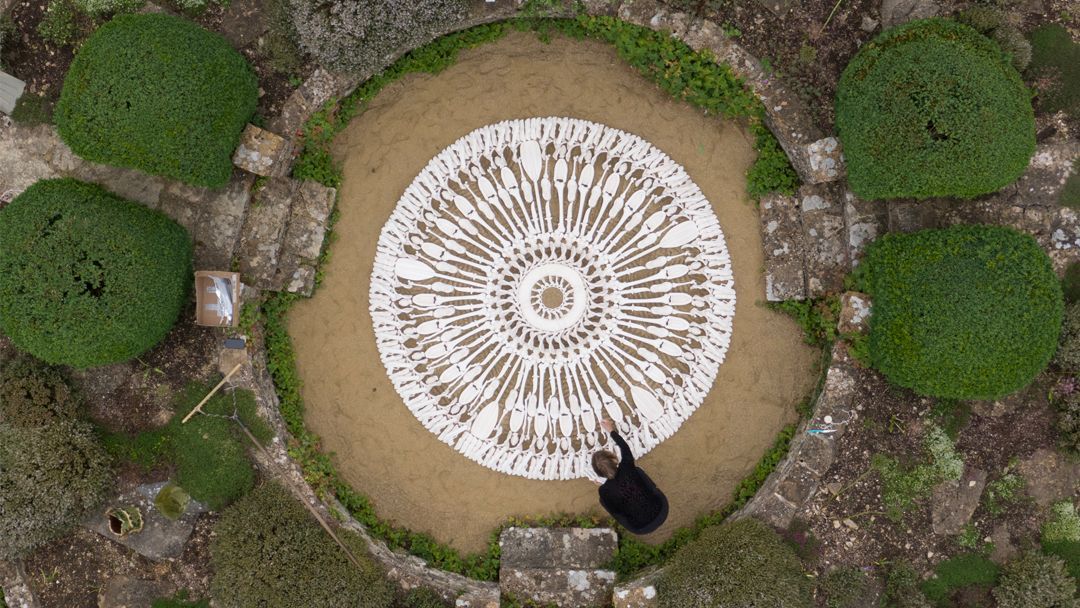
Below: Exhibiting at The Coro, Ulverston, August 2022

Below: Private View at Tÿ Pawb, Wrexham Wales. January 2023. Awarded The Peoples Prize.
Below Images of the completed Mandala. Installed in the beautiful sculpture gardens of Fresh Air Sculpture, Quennington, Gloucestershire. Exhibited 5th to 26th June 2022. (Image courtesy of Steve Russel Studios and Fresh Air Sculpture.)
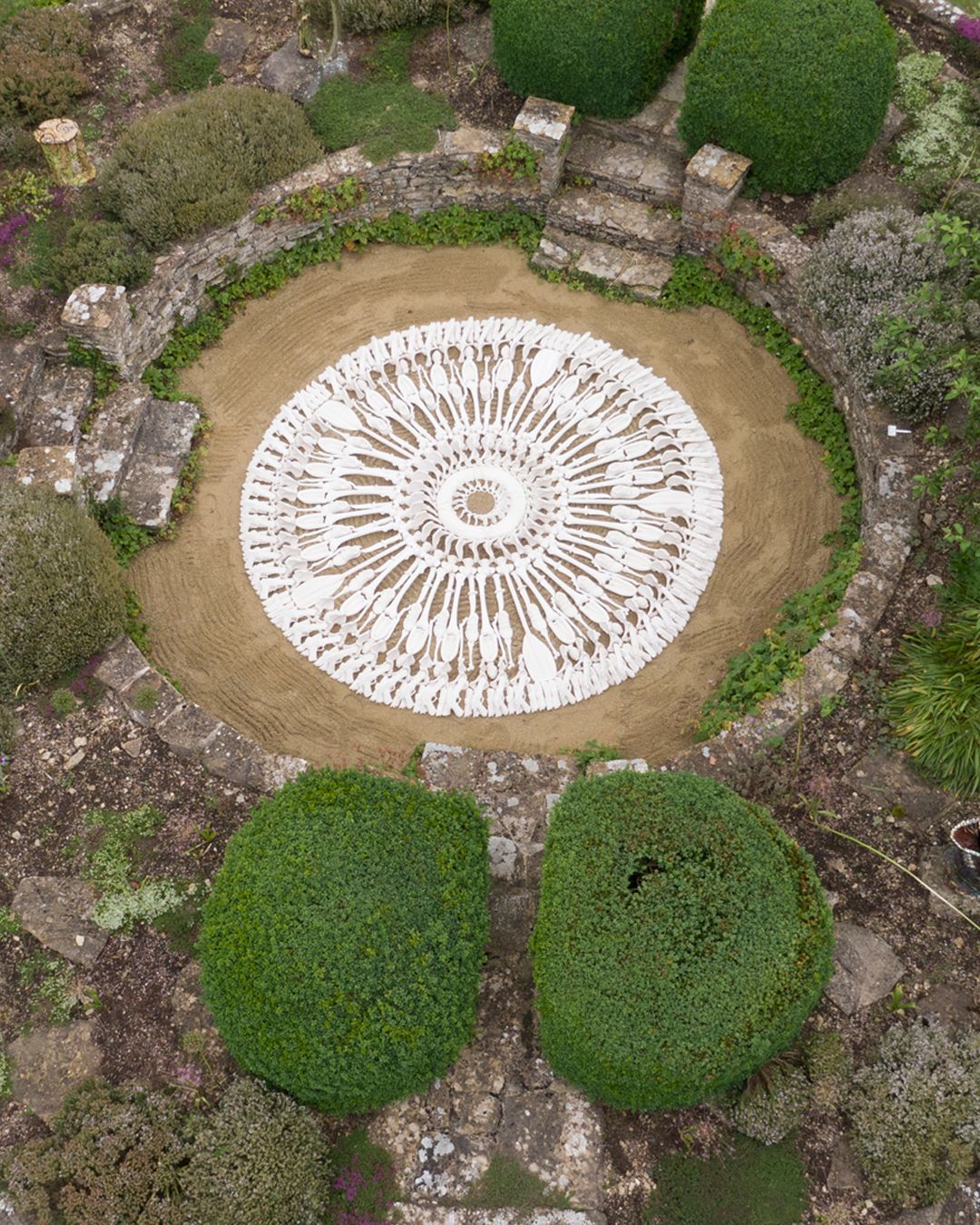
Below Studio experiments articulating cast objects, bones, driftwood, weapons, dinghies, paddles, children's trainers and teddies,
By manipulating these objects in the studio I create what I call my 3 D drawings , these I use for inspiration to create the final work..
One of these 3 D drawings lead to the development of a new work , Three Hundred and Still Counting. ( seen below) . This work uses cast driftwood with abject faces. There is one cast piece for every refugee who has died trying to cross the English Channel in escalating numbers . The driftwood is symbolic of recurring refugees arriving on English beaches .
The objects used in the construction of The Colour of Mourning, were used in workshops that I ran during the exhibition, at The Coro, Ulverston, Cumbria. The students of all ages were encouraged to make their own sculptures and mandalas. By handling the objects it created a natural dialogue about the current situation of refugees fleeing war torn countries and regimes. There ideas were varied and thought provoking. Some of the images of their work are shared below.
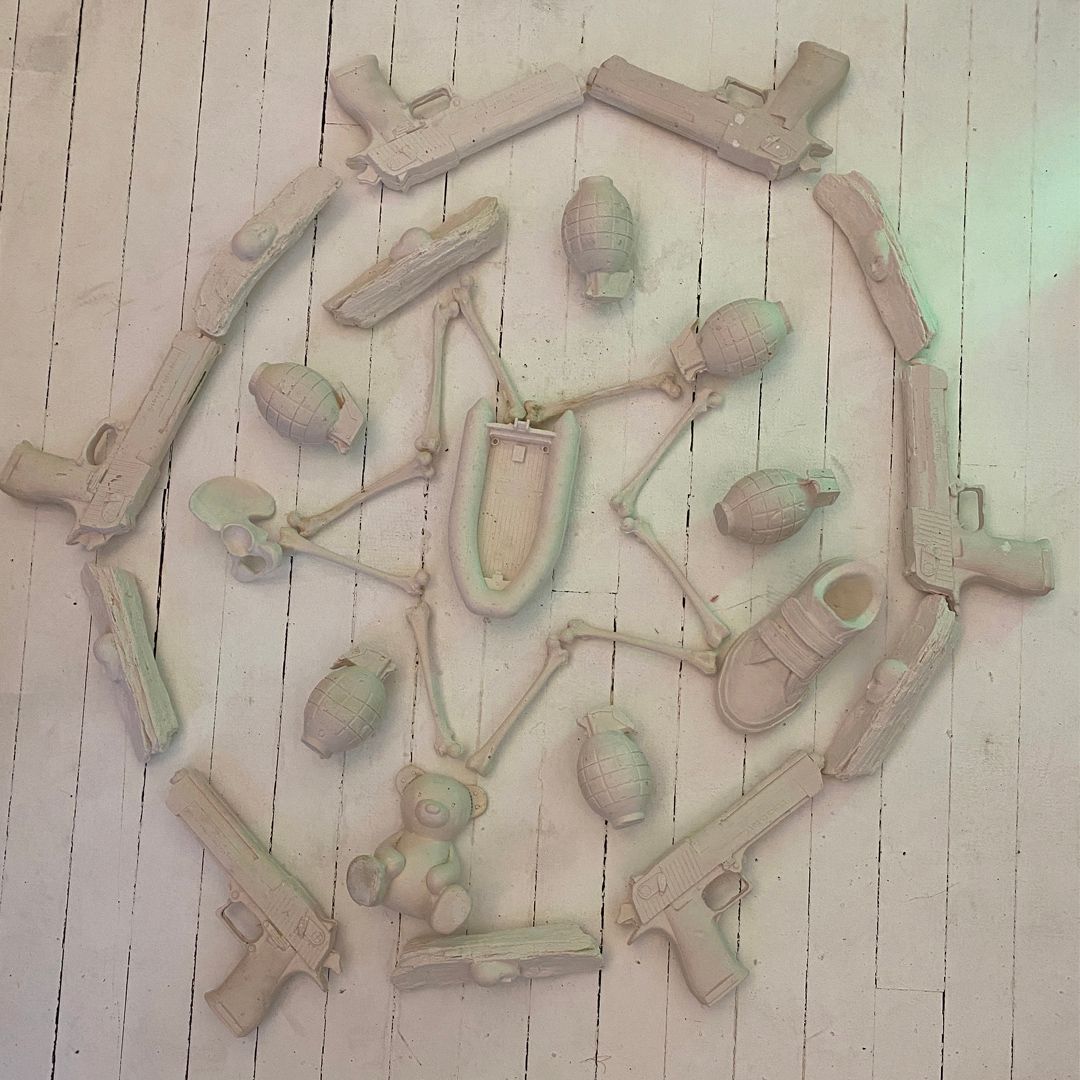
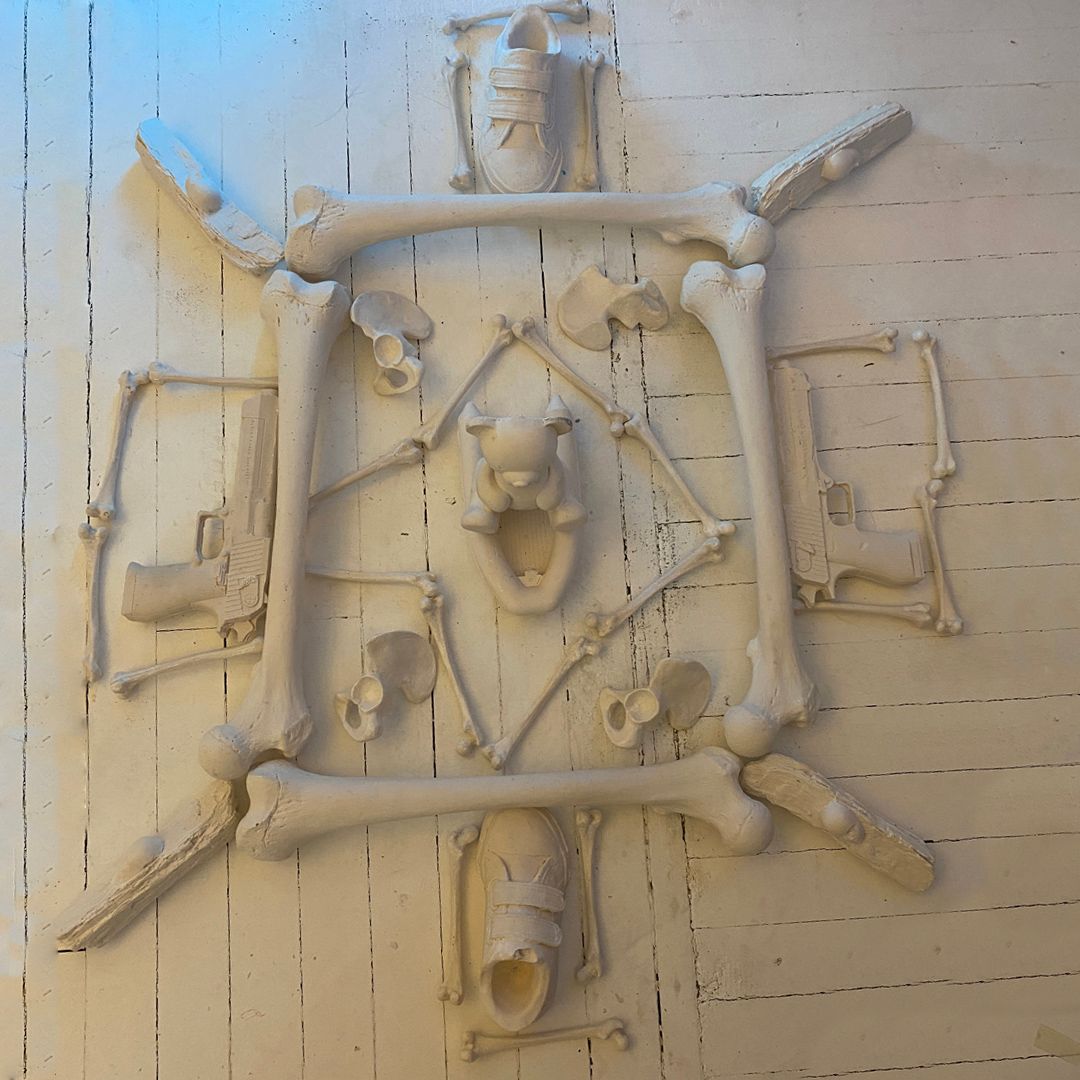
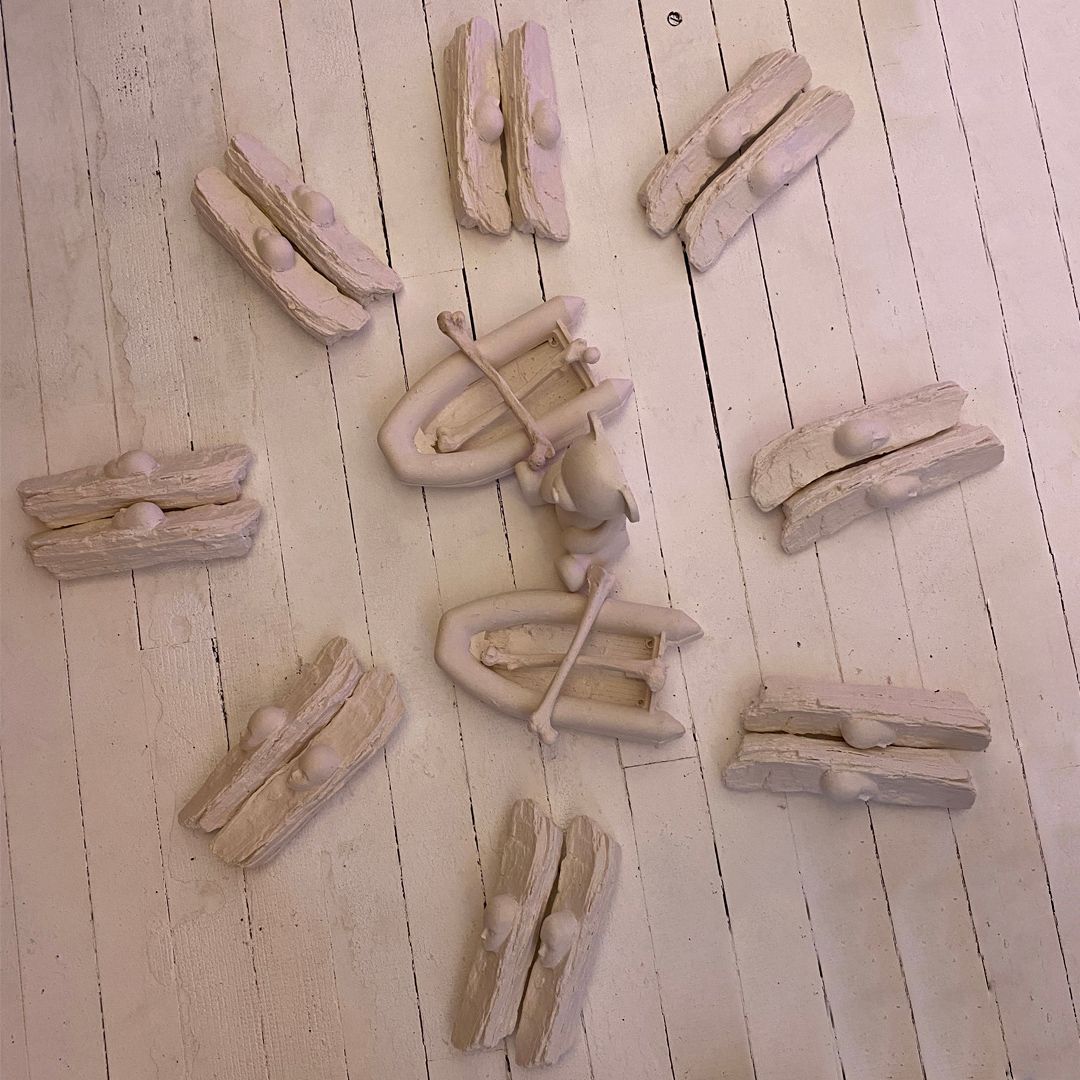
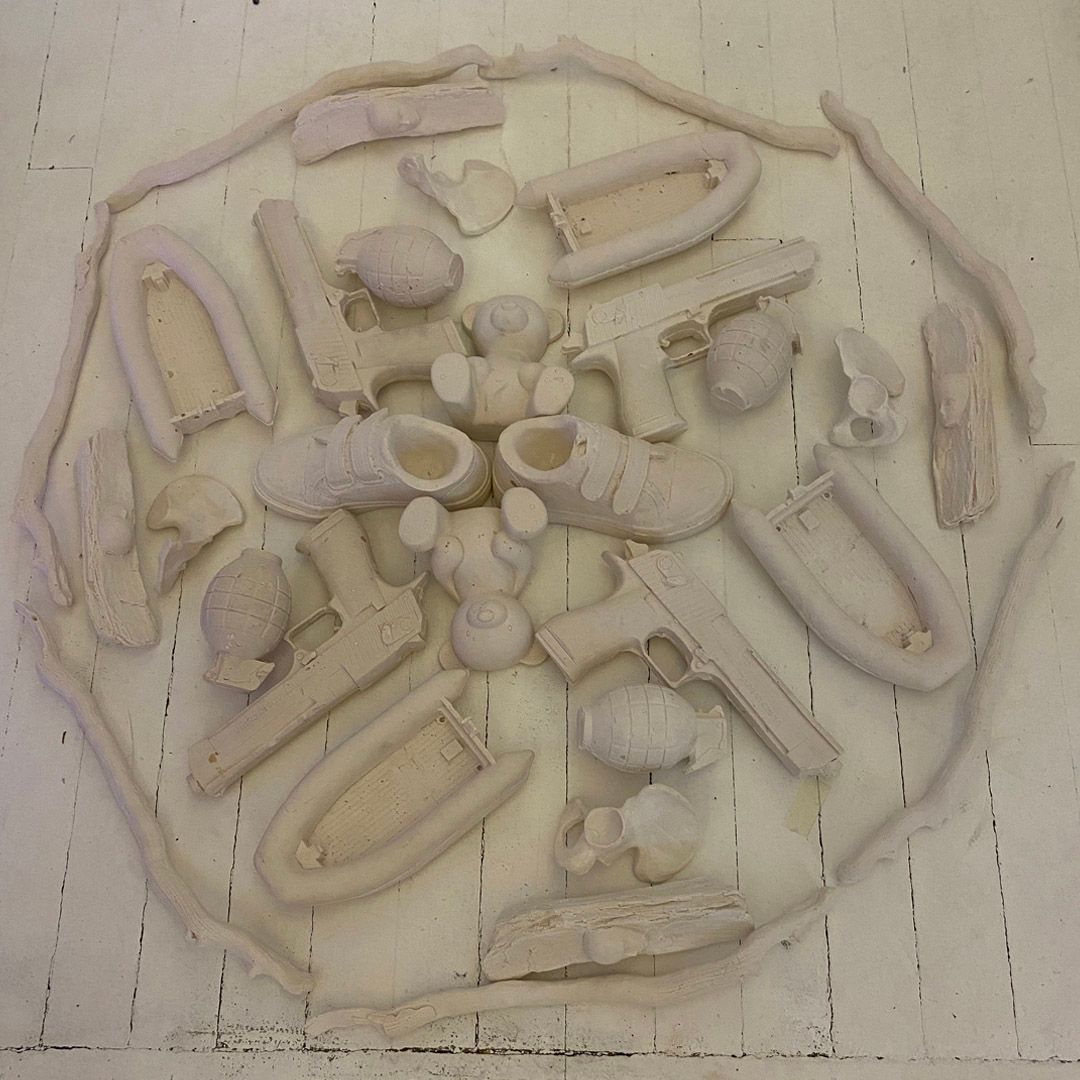
I also collaborated with Malmesbury, a fully comprehensive school after exhibiting at Quennington, Gloucestershire. Students of varied cultural and social background, with mixed abilities showed incredible engagement together, to make thought provoking artistic interpretations. There is something very special about handling the objects alongside exploring such complex themes, the tactile element breaks down barriers for many. The collective experience, built and restored a sense of community.
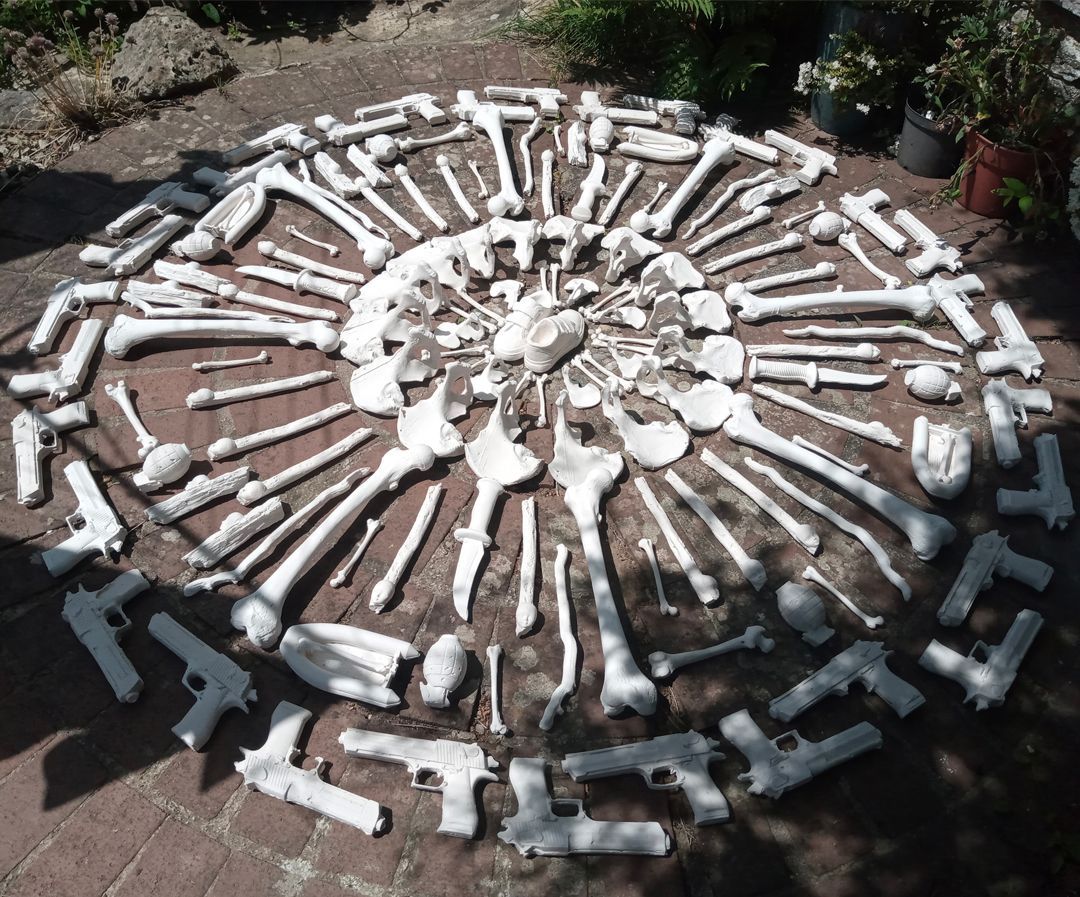
Mandala design by Sue Gibbons, Art Teacher, Malmesbury School.
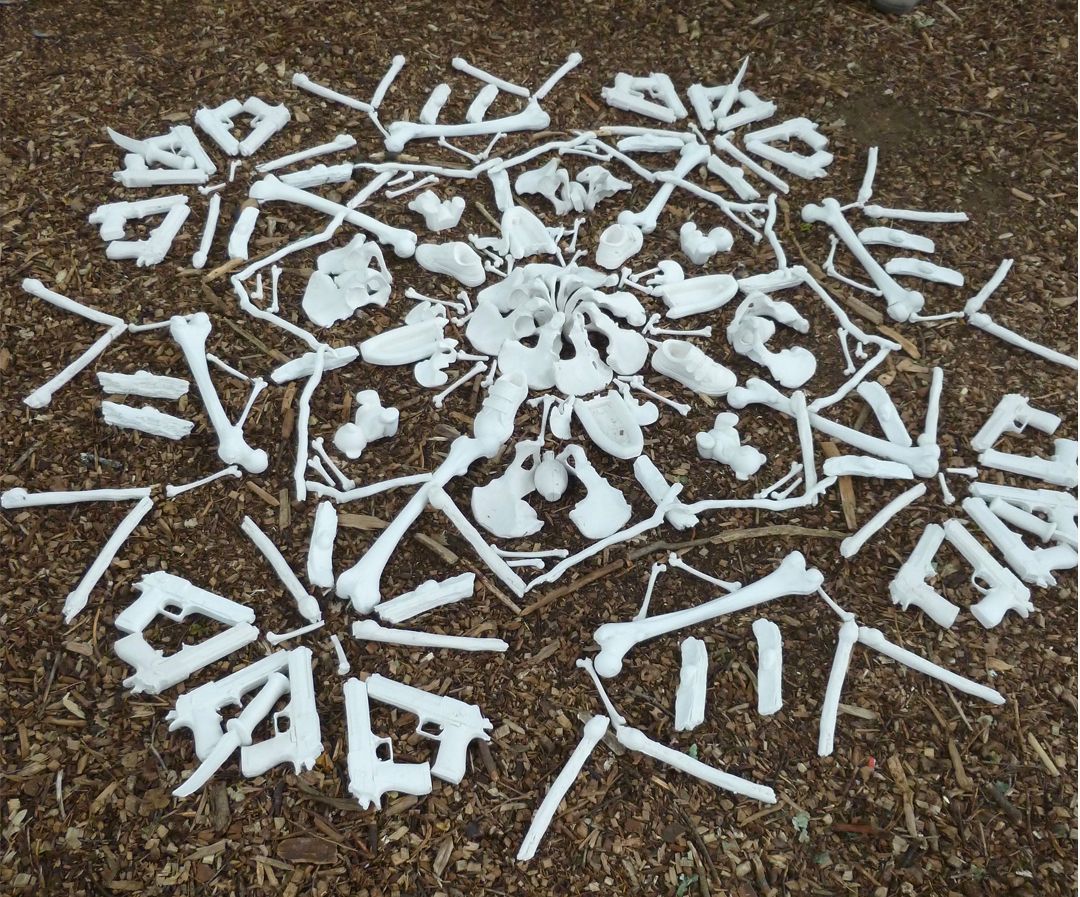
Mandala design in arboretum by sixth formers Malmesbury school.
The school borrowed the objects again when I ran a workshop with their art teacher Sue Gibbon’s in January this year for the Holocaust Memorial Day. Sue, donated fabric that had been bought by her grandmother in the 1950’s to make pyjamas for her husband. It was never used as it reminded him of his traumatic experience of liberating Belsen concentration camp.
Below are some images from the workshop.
